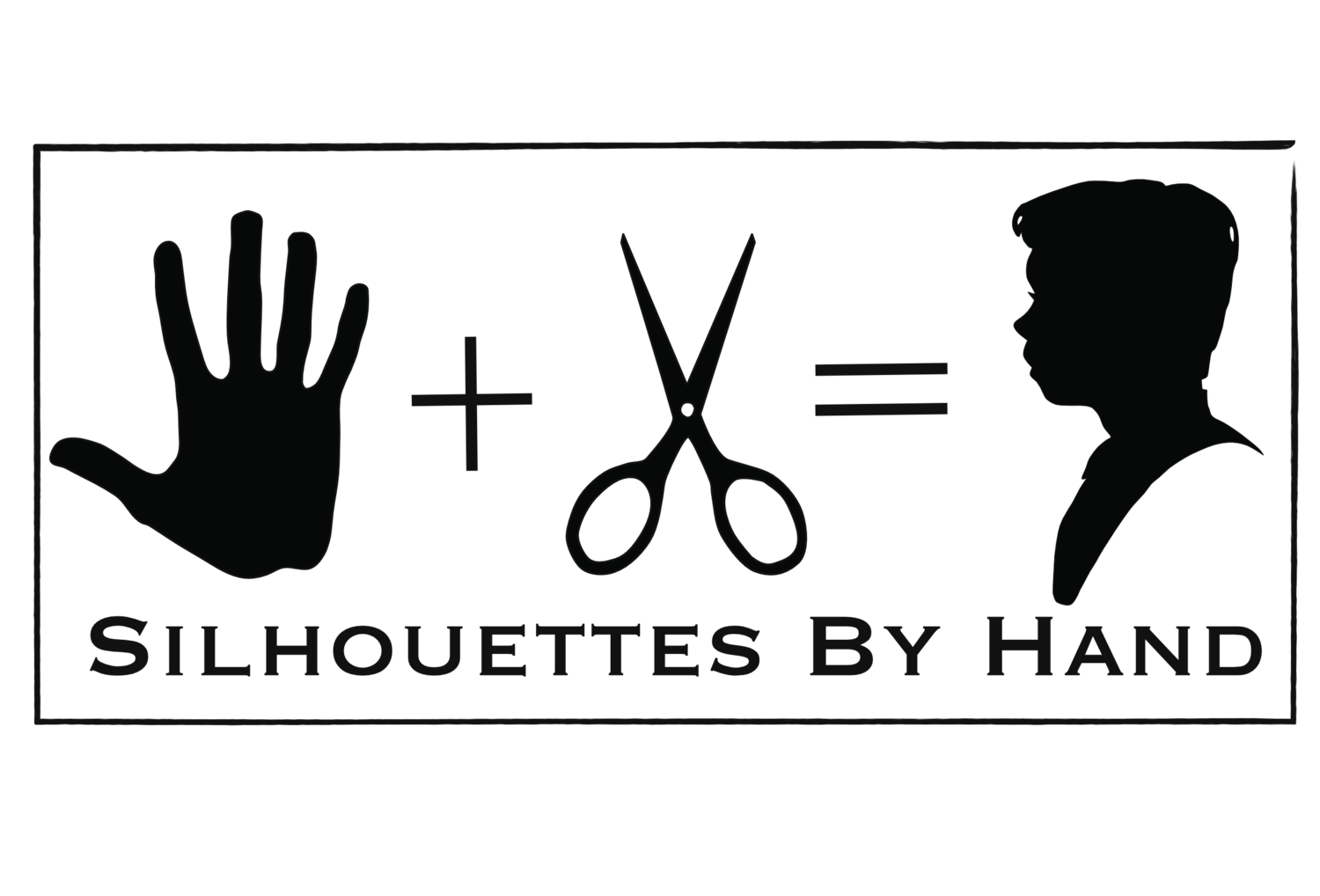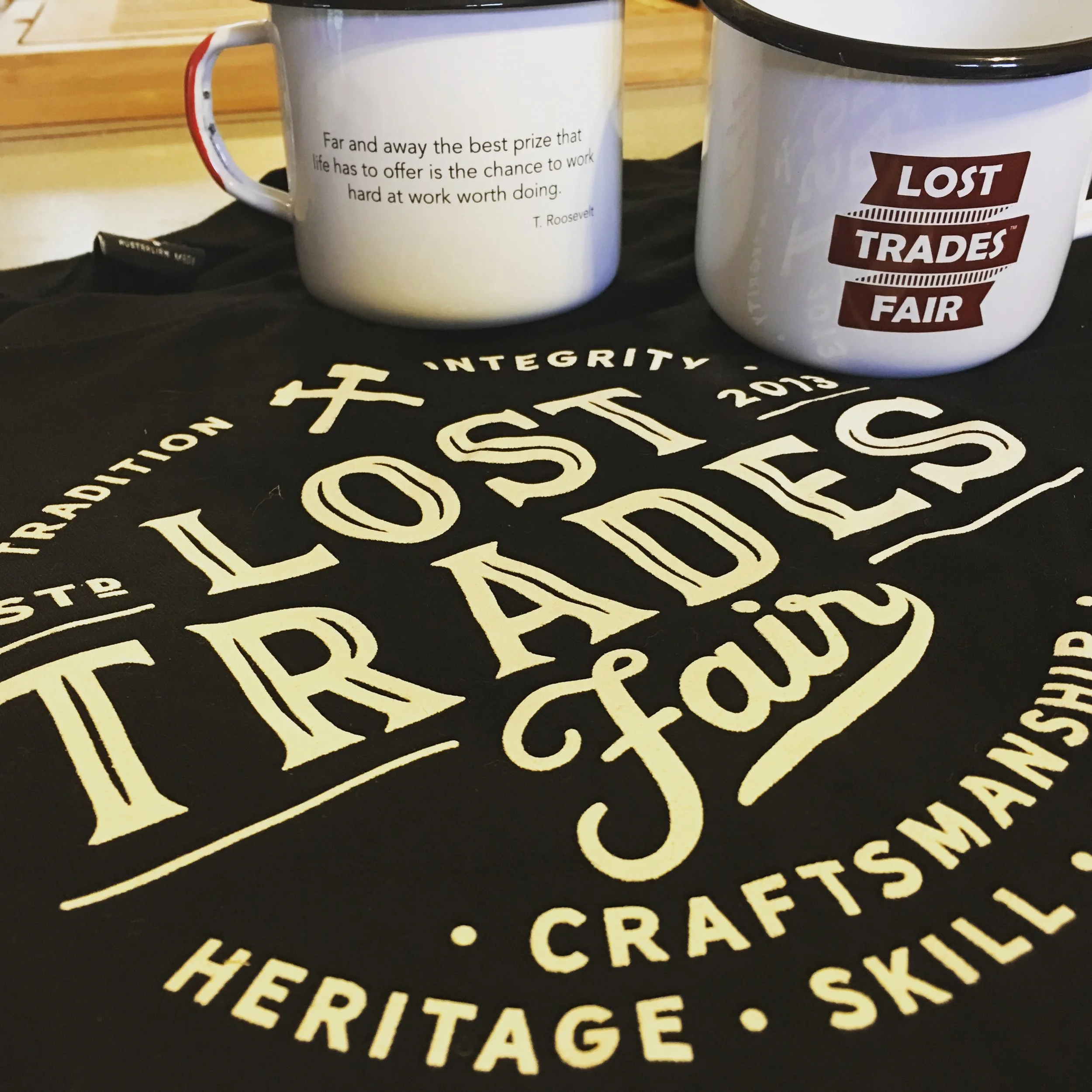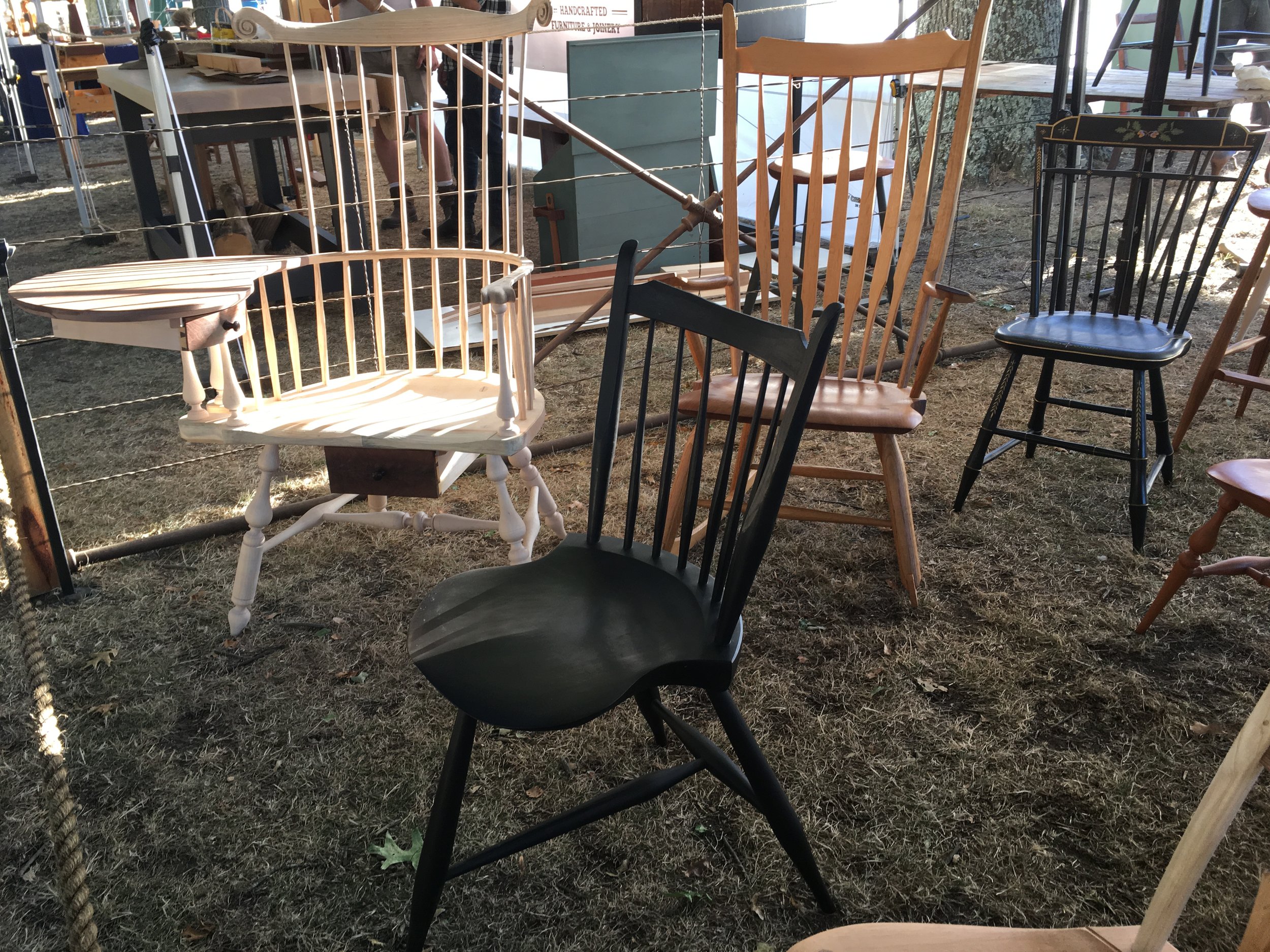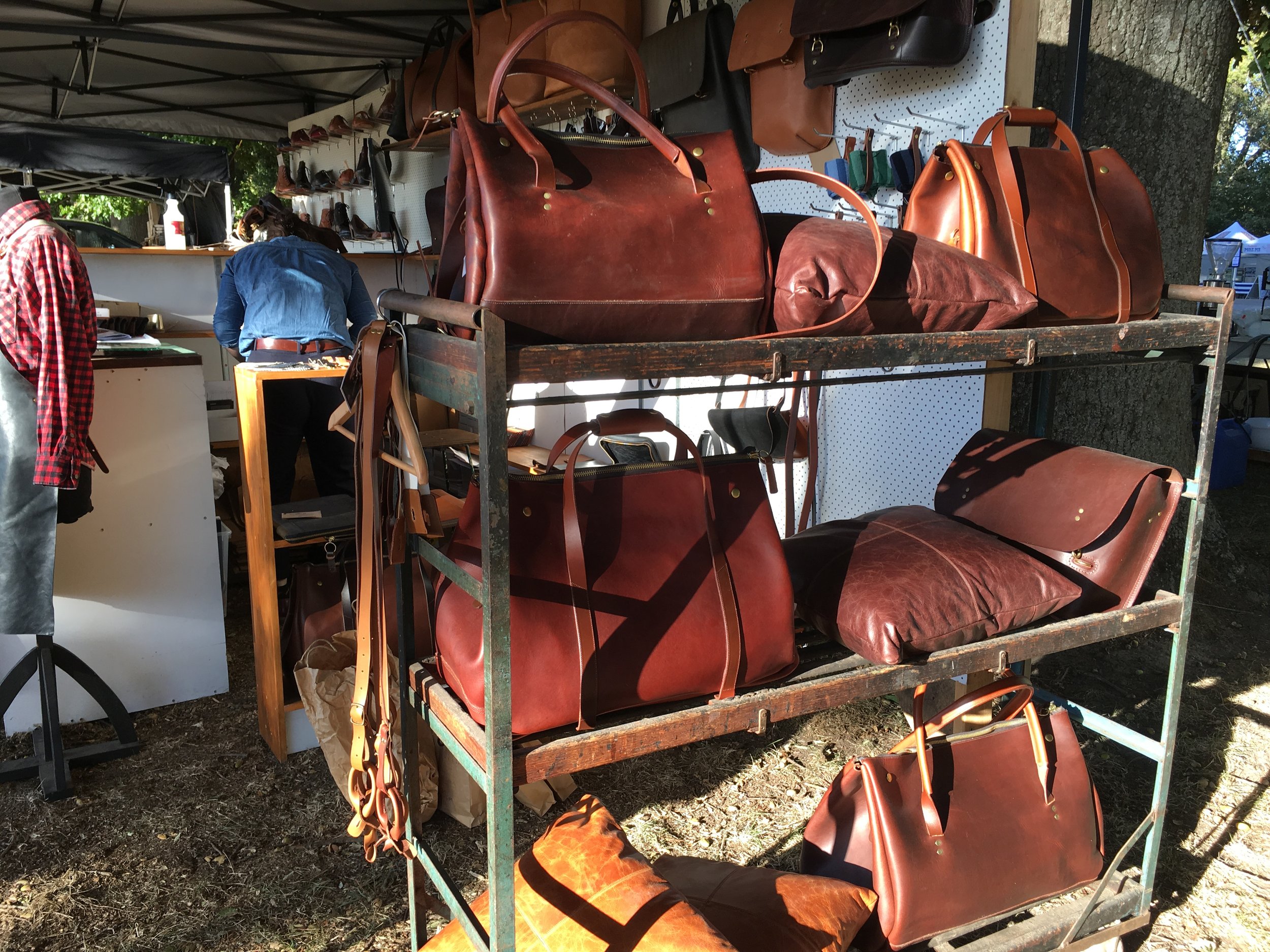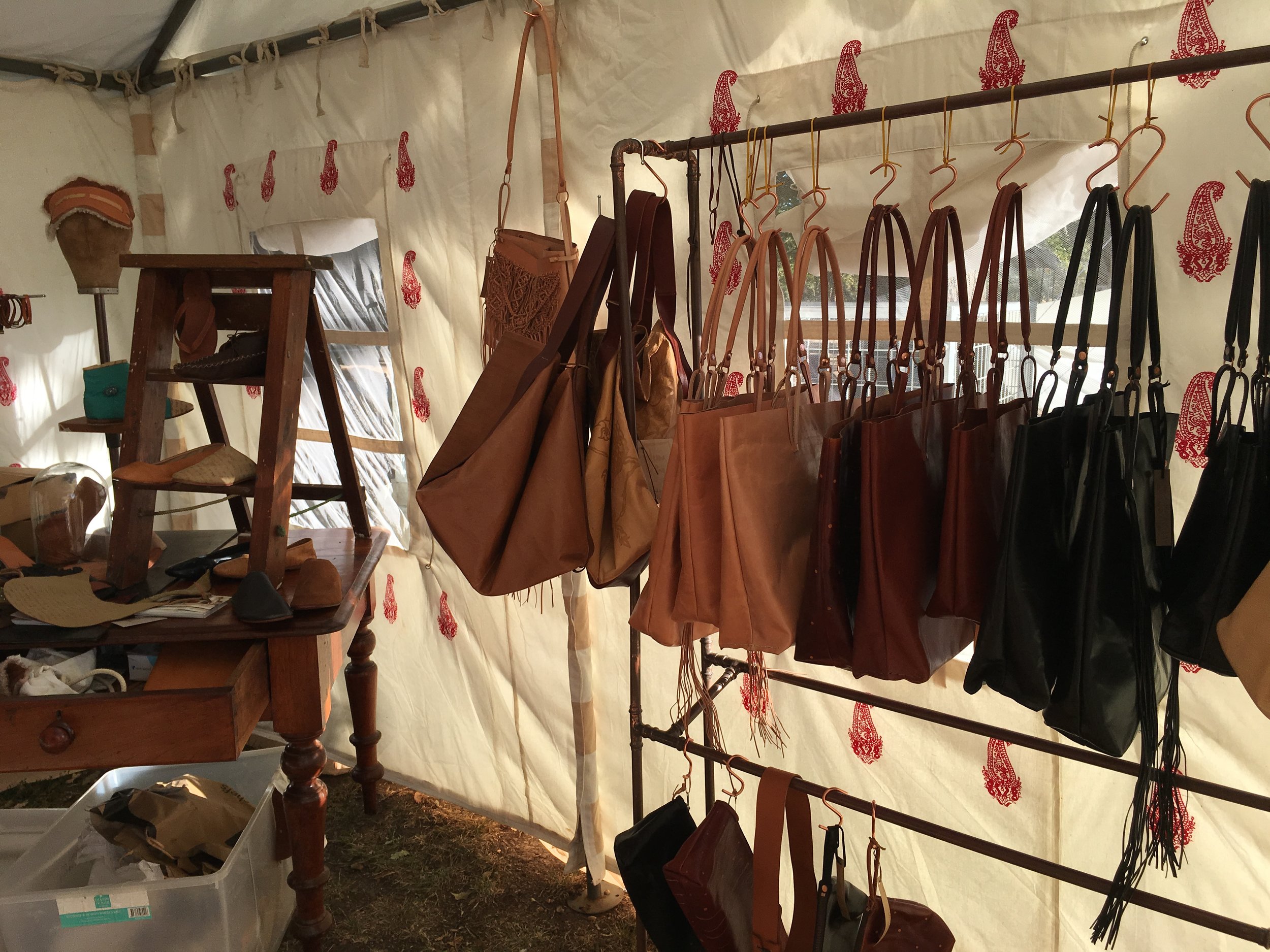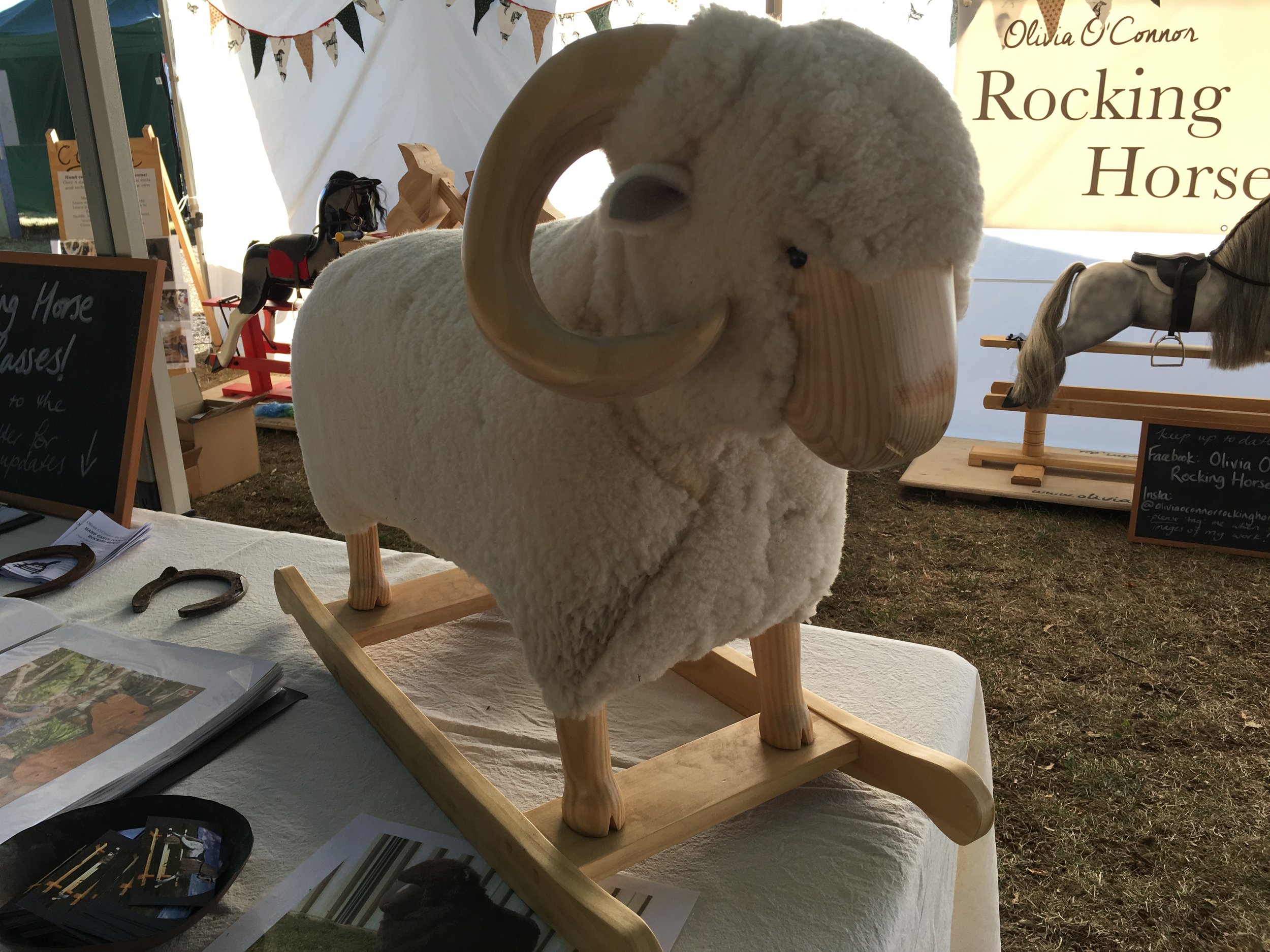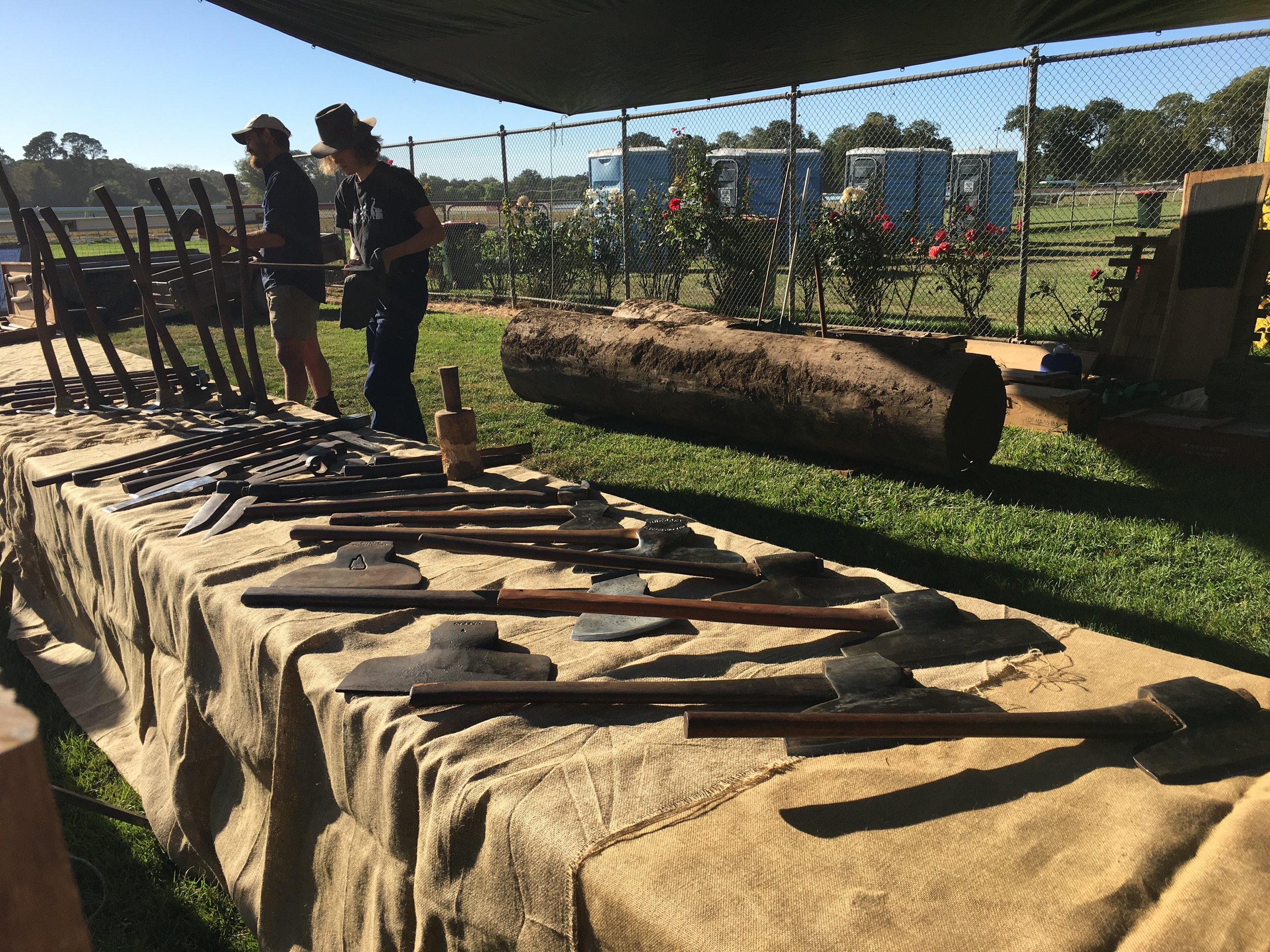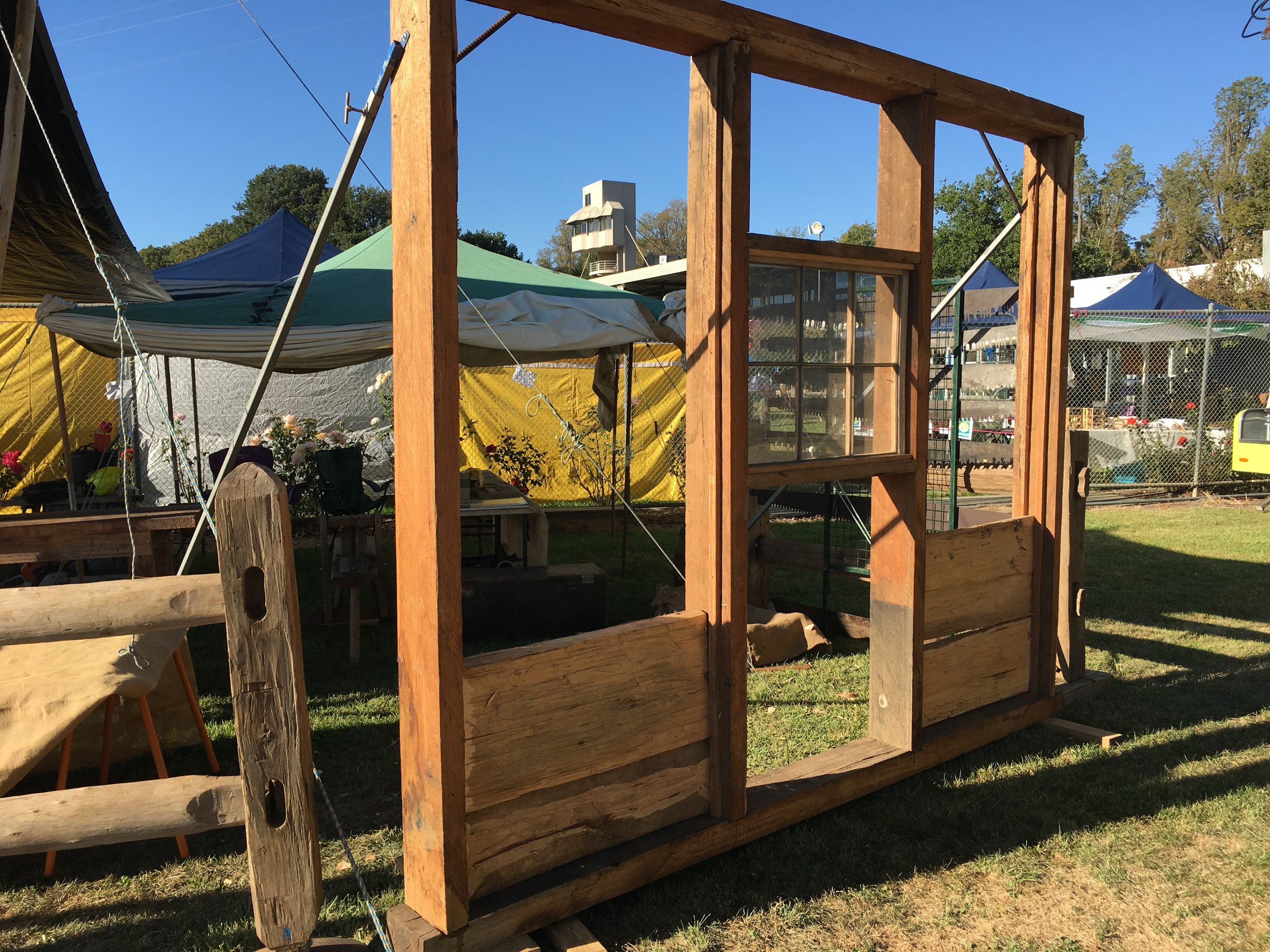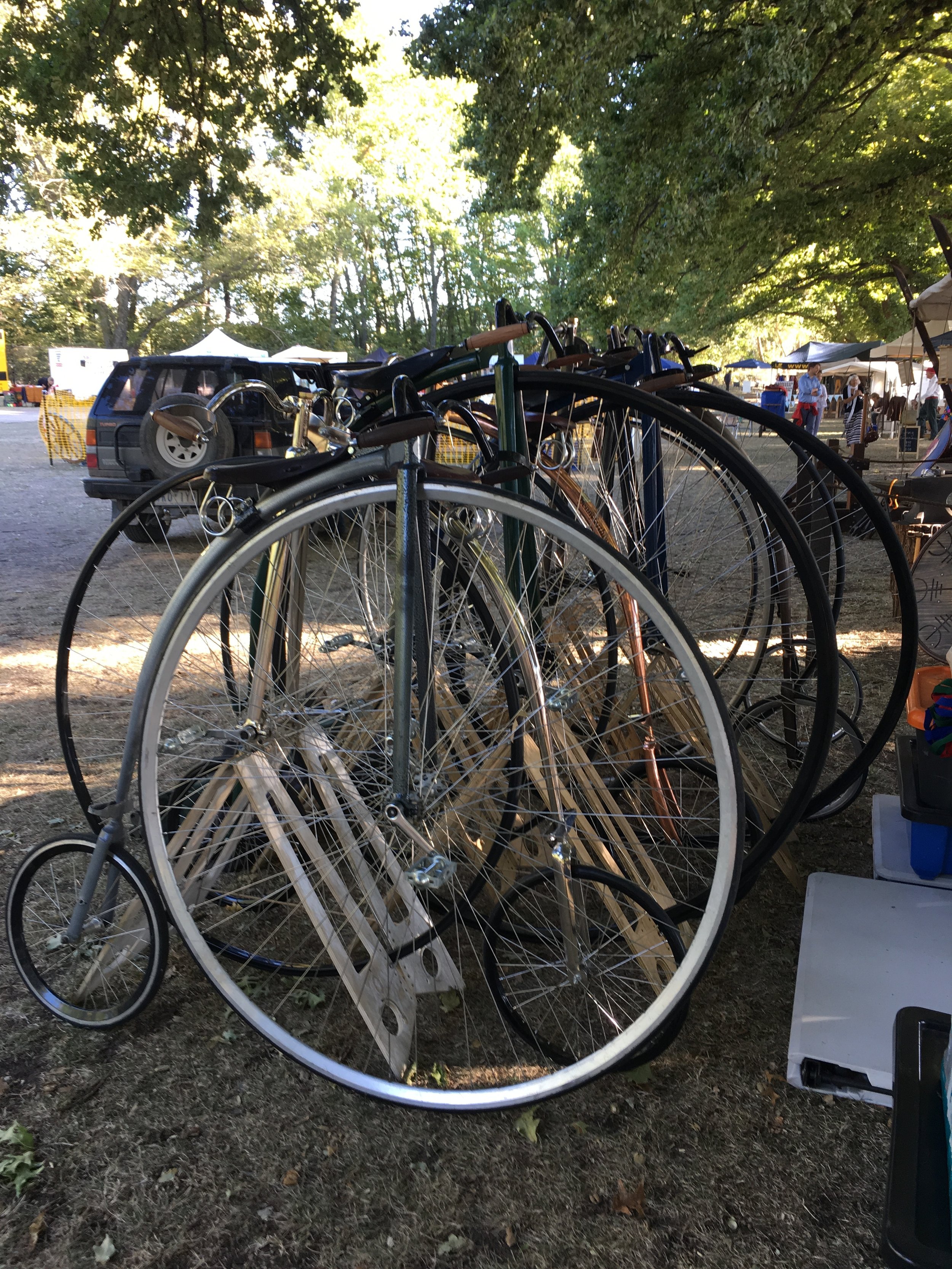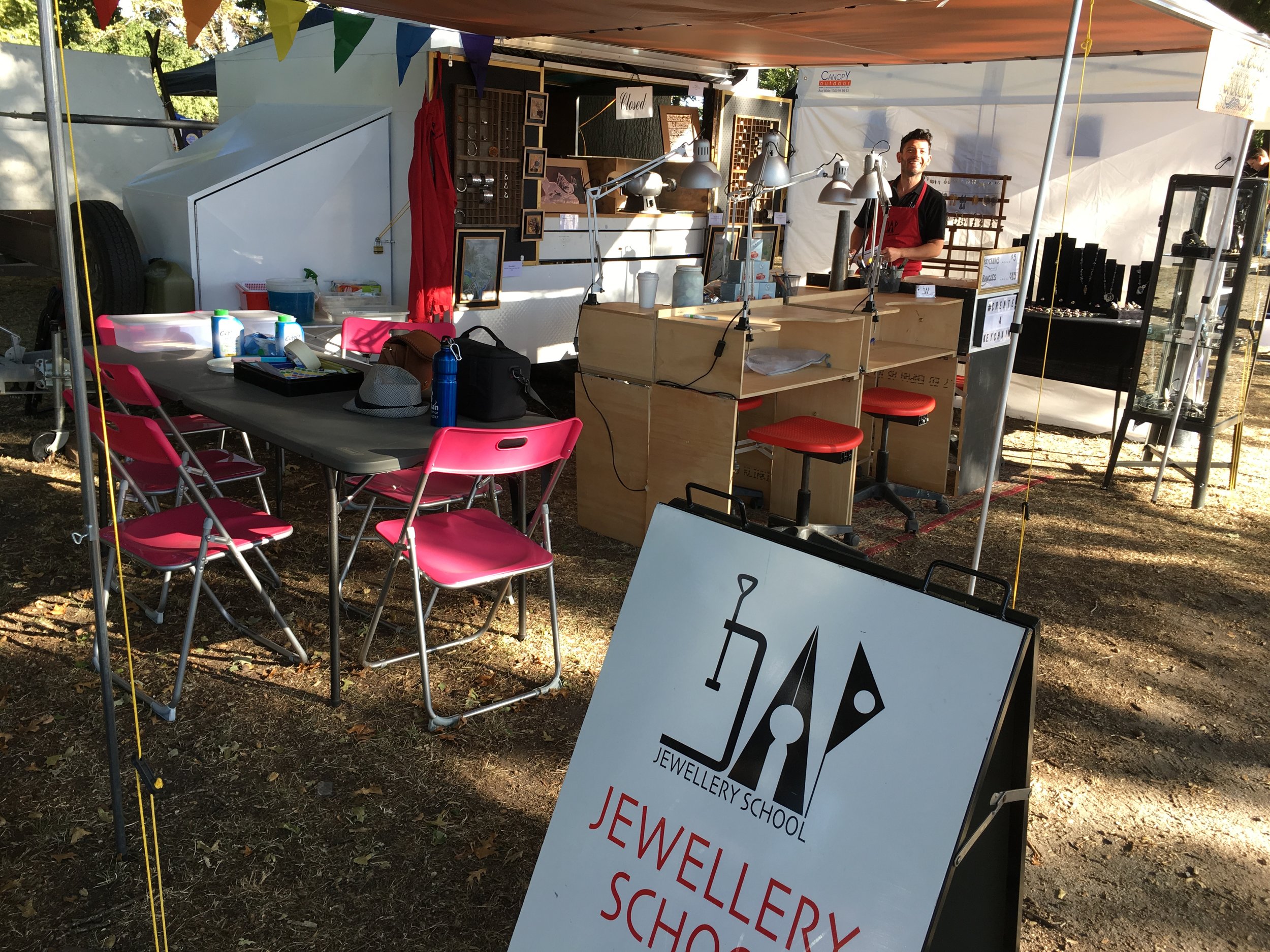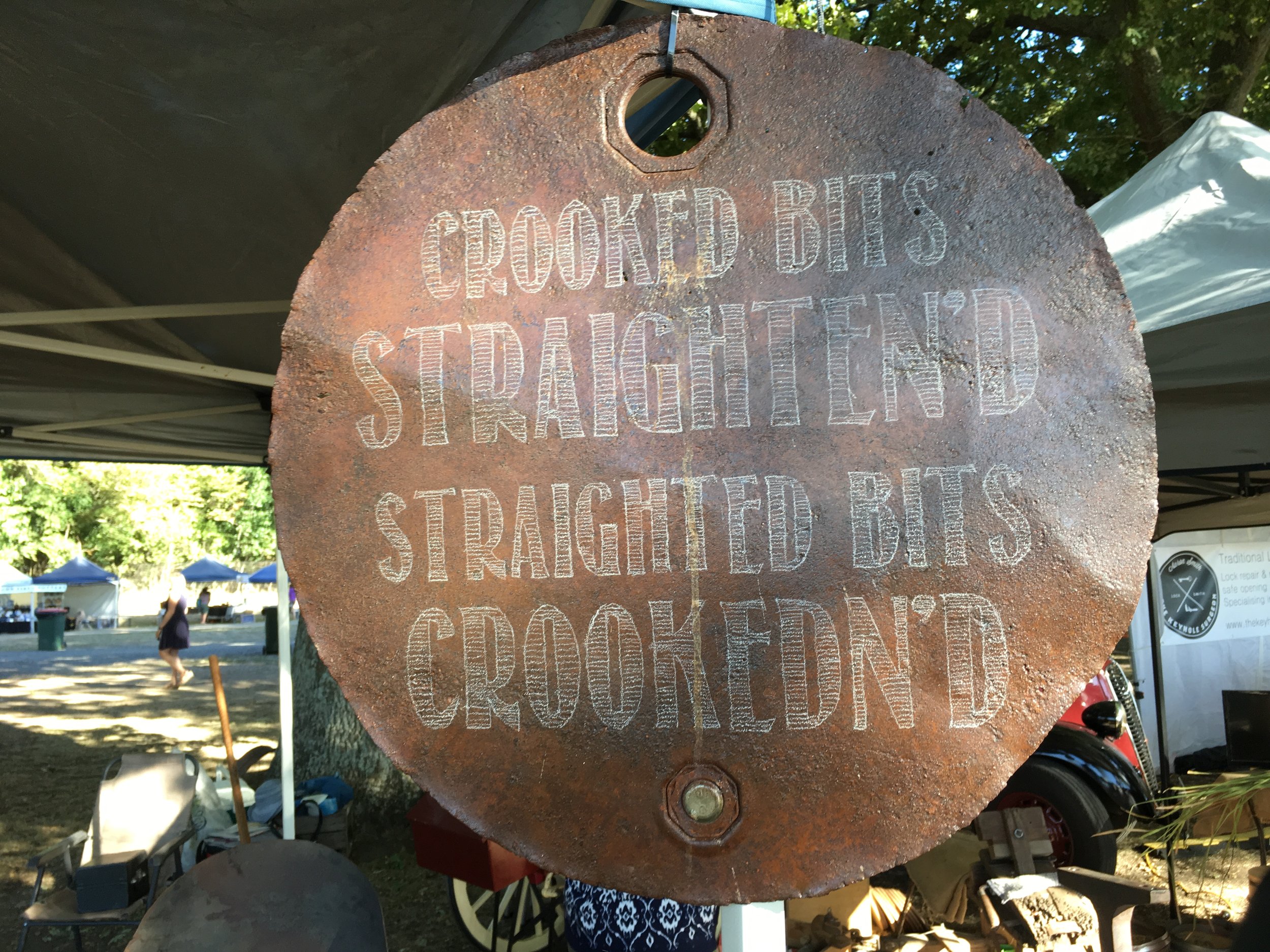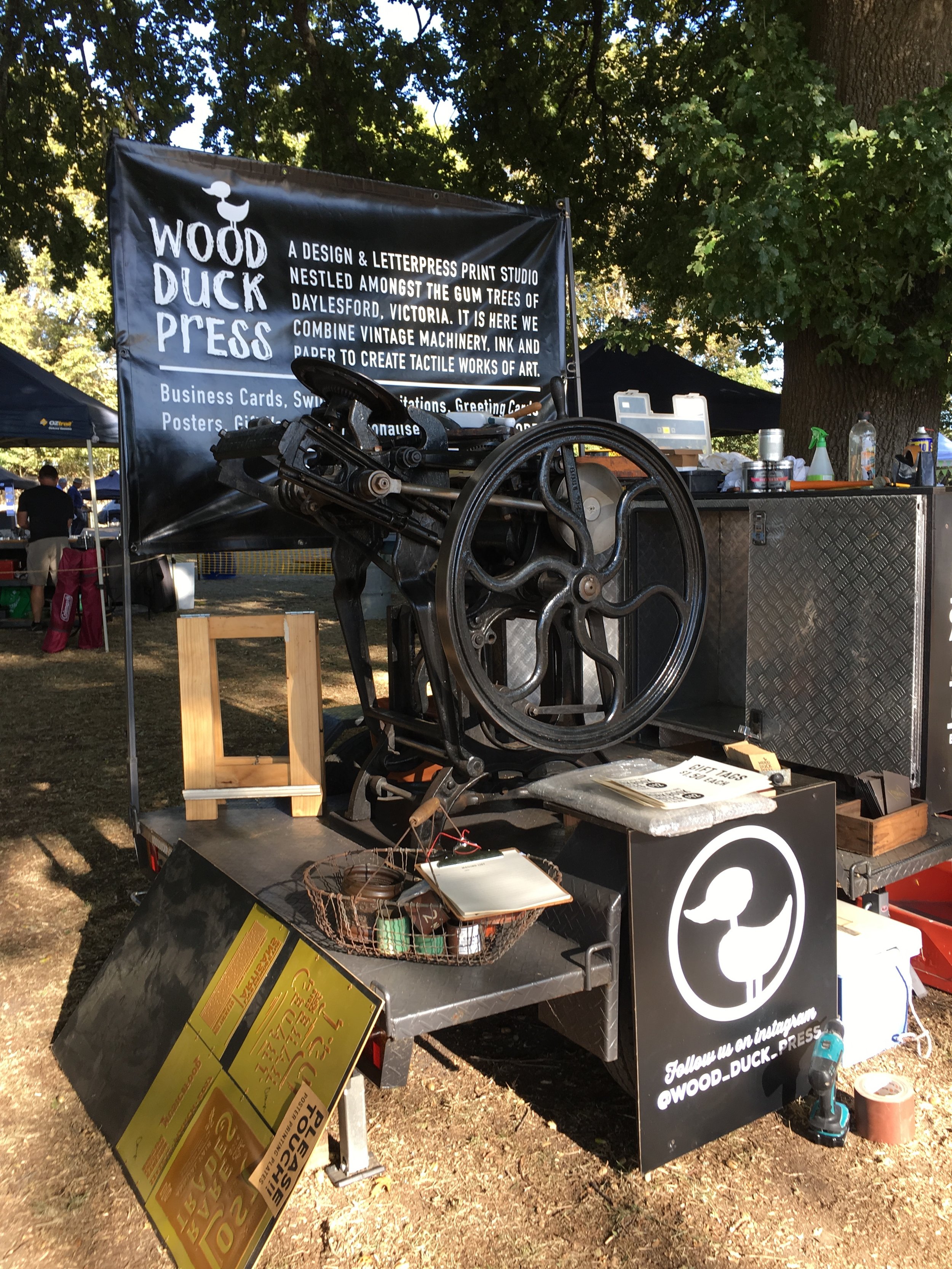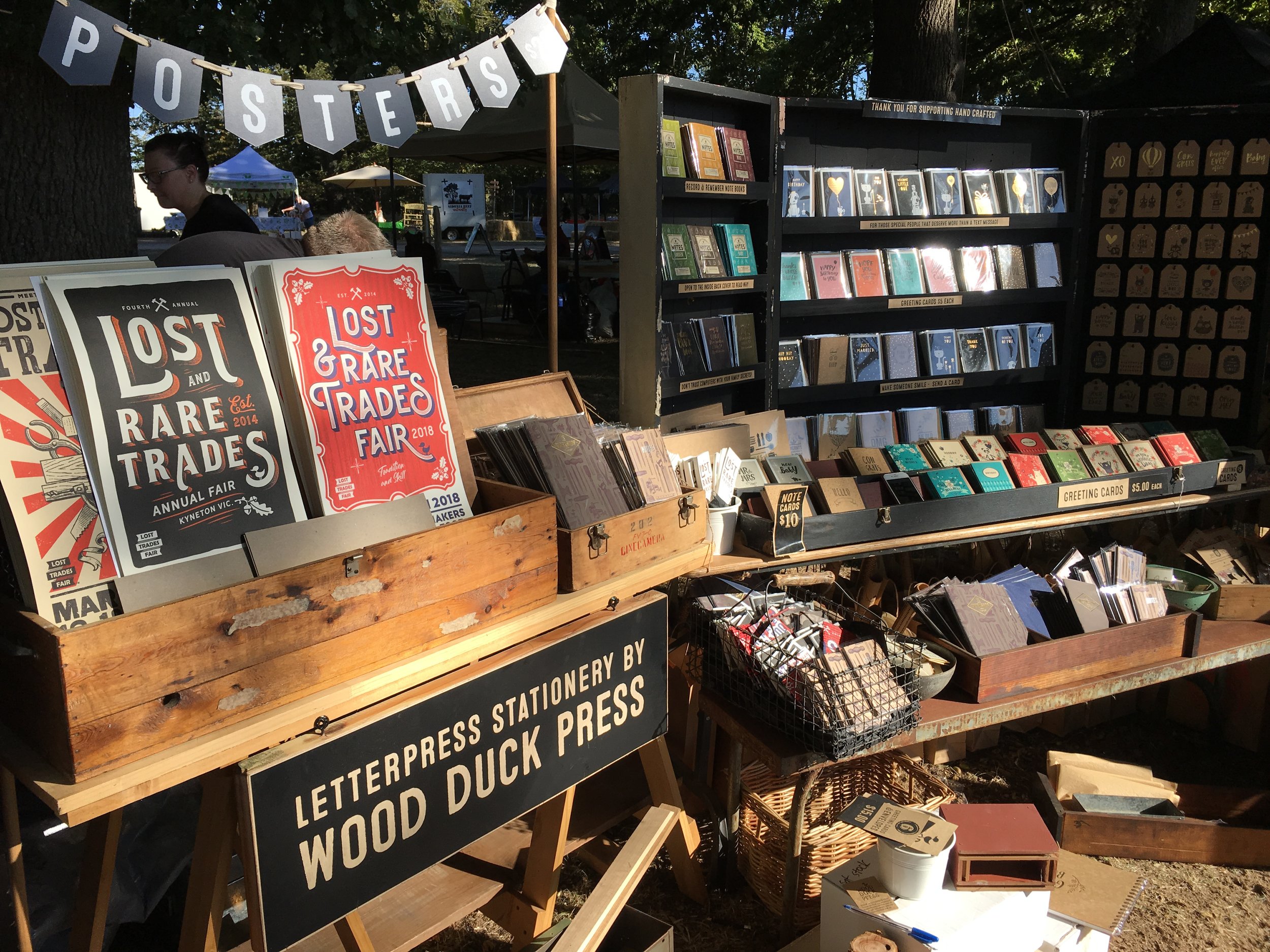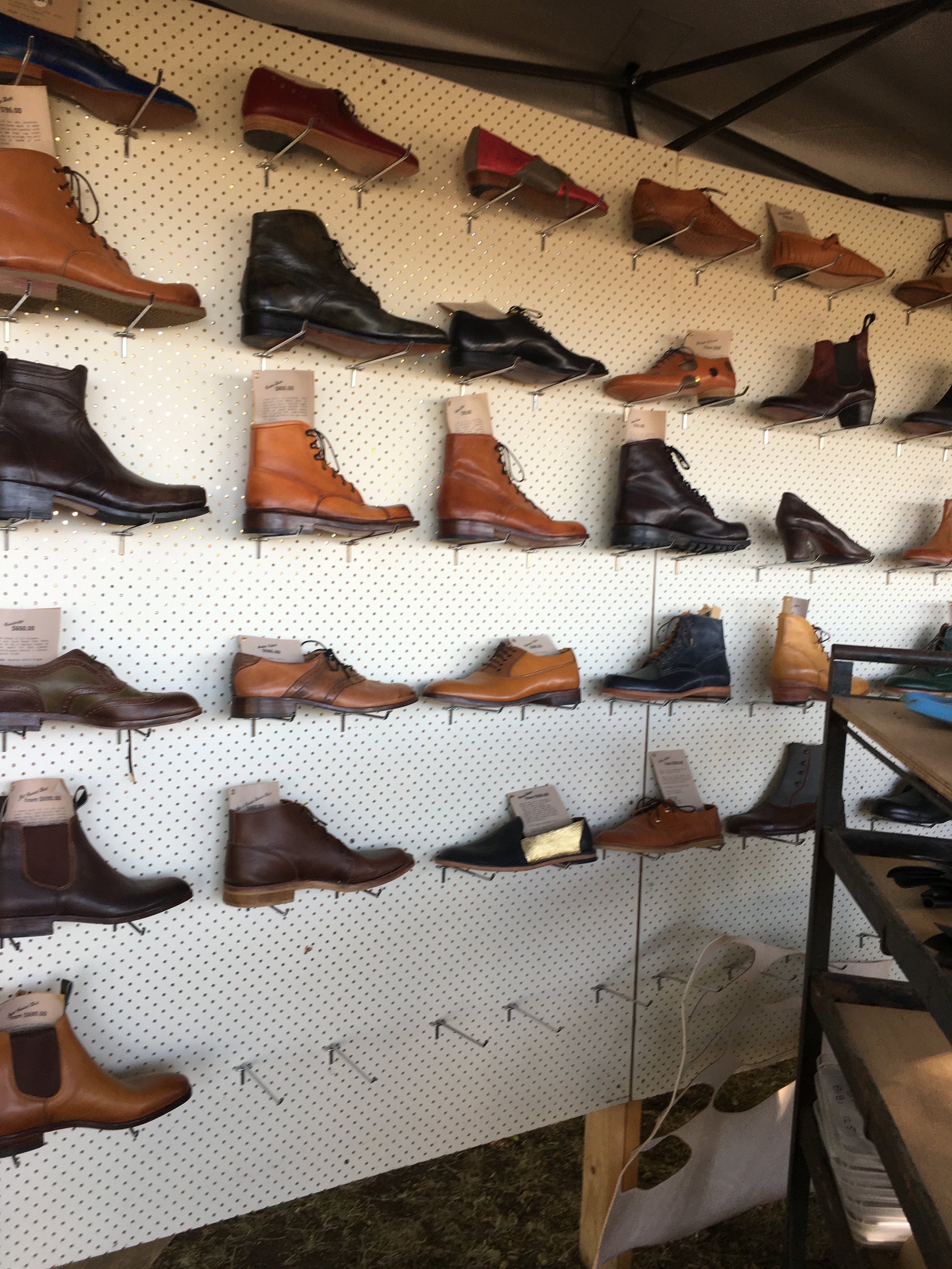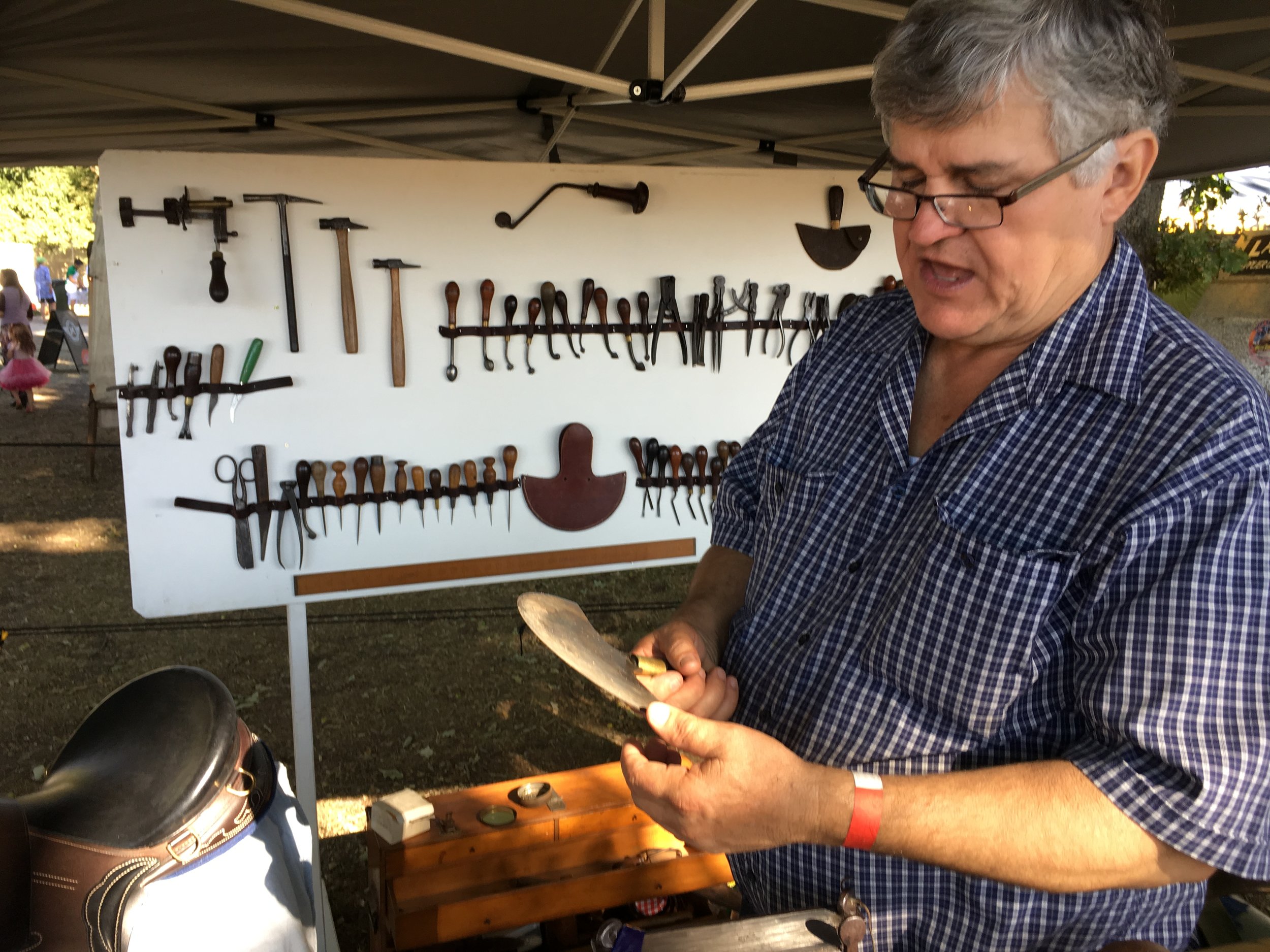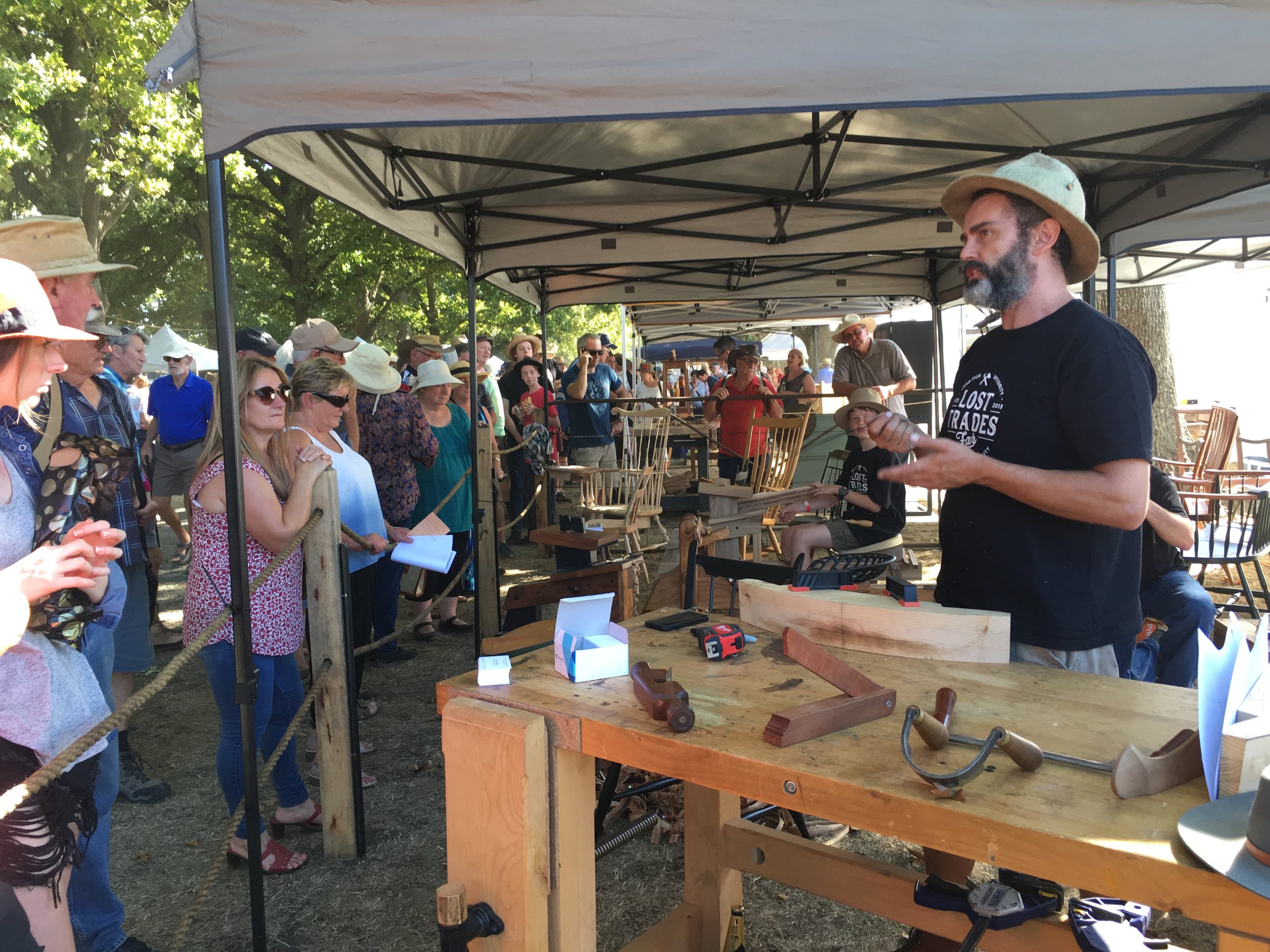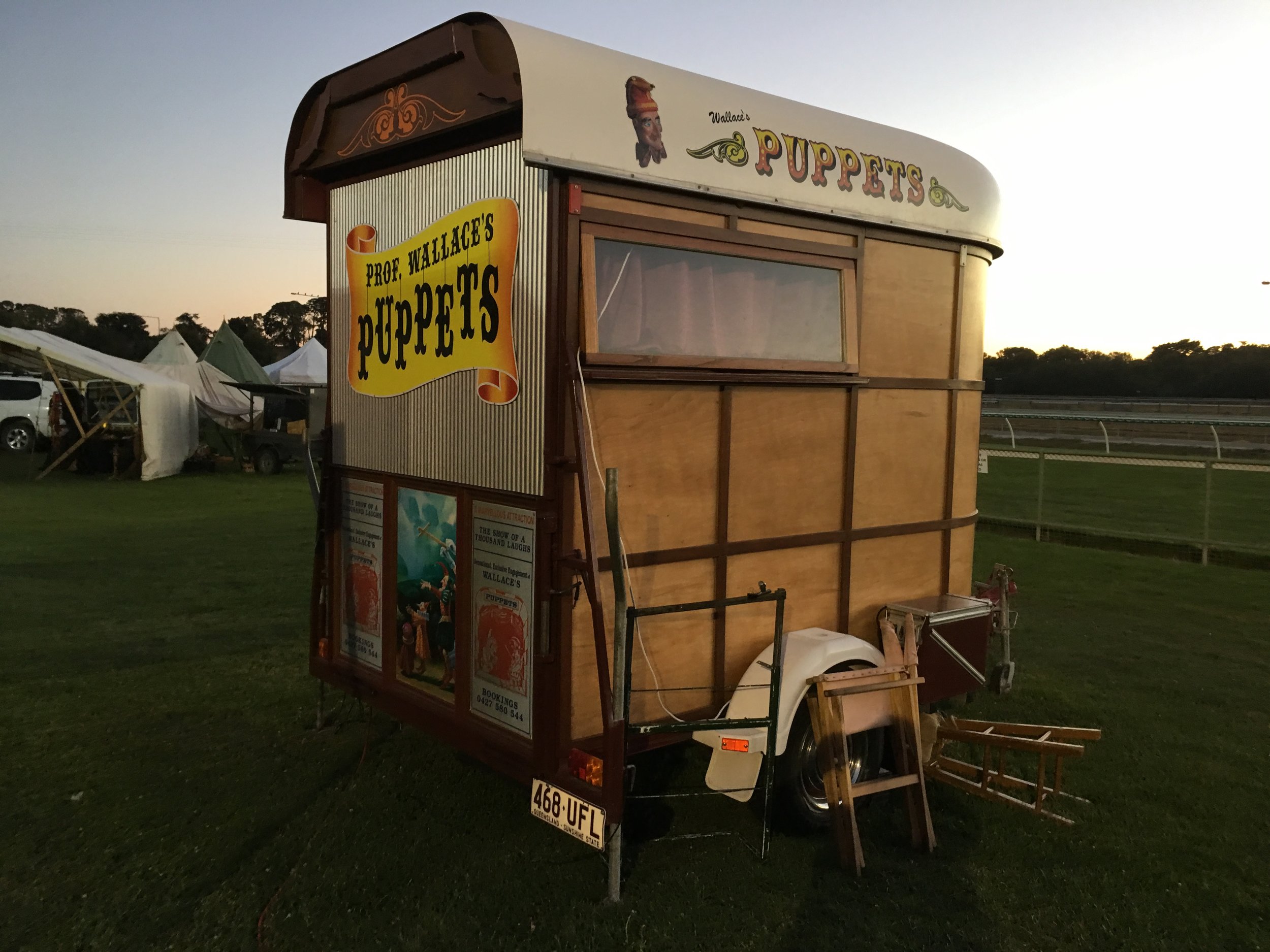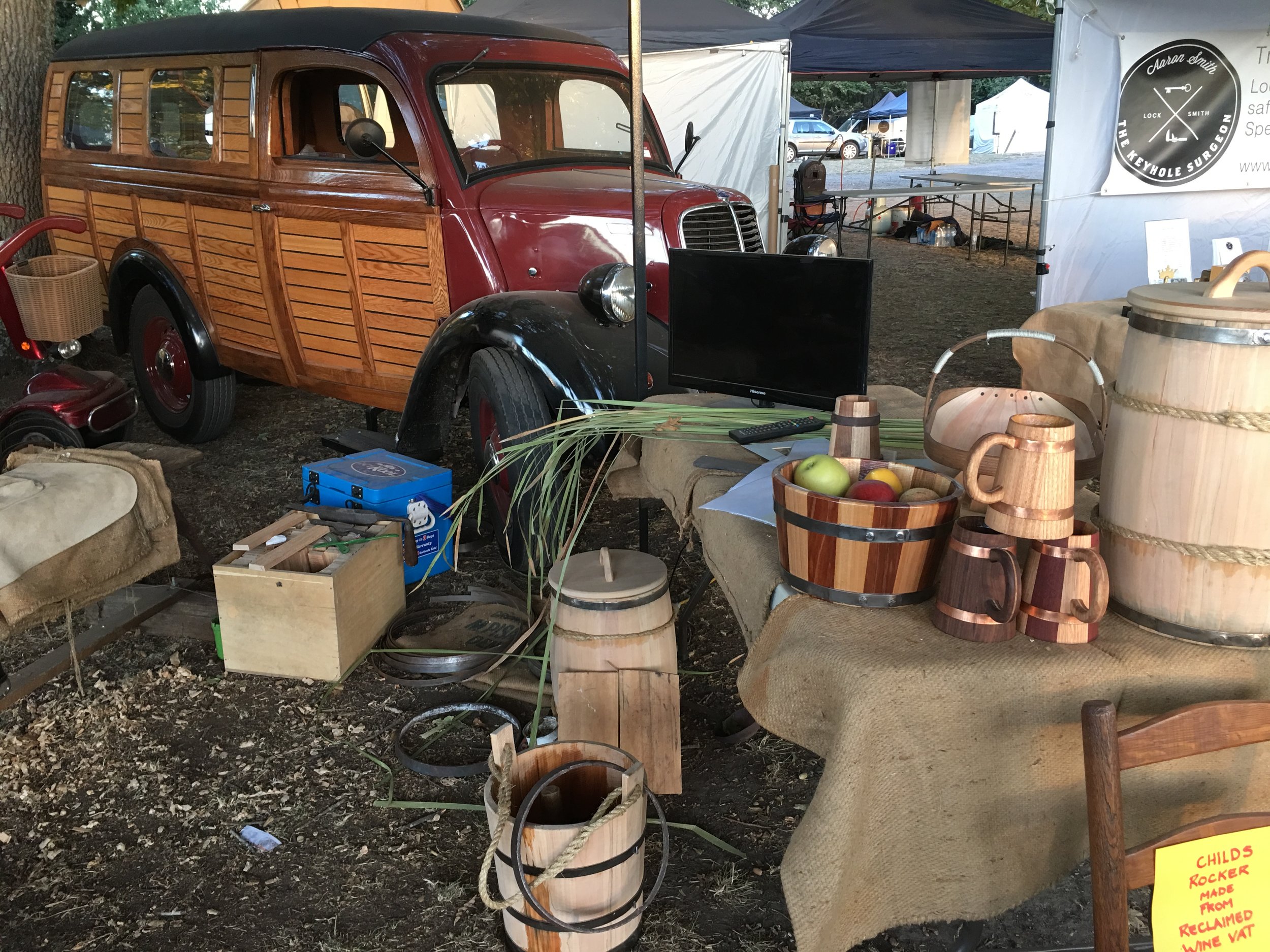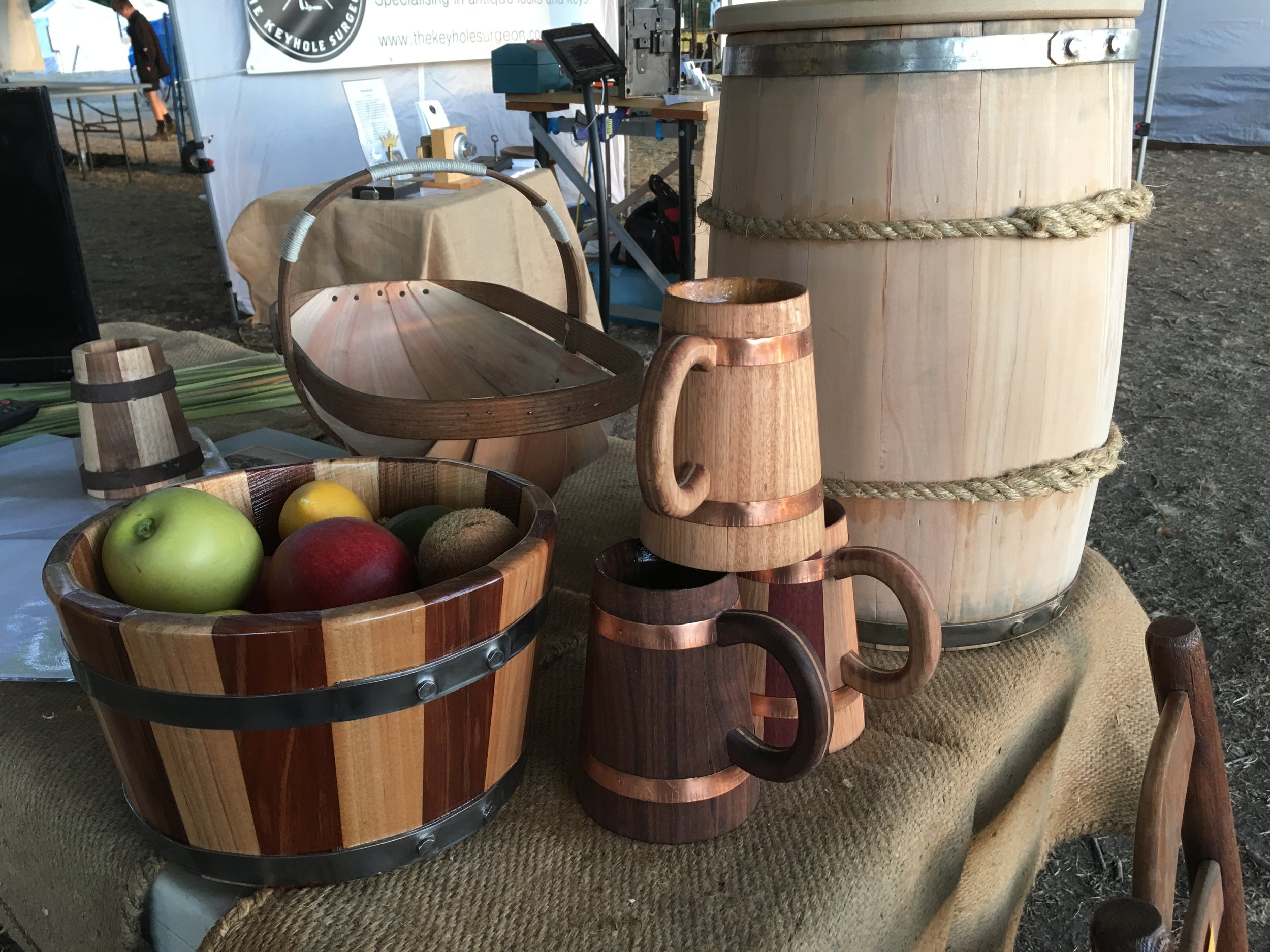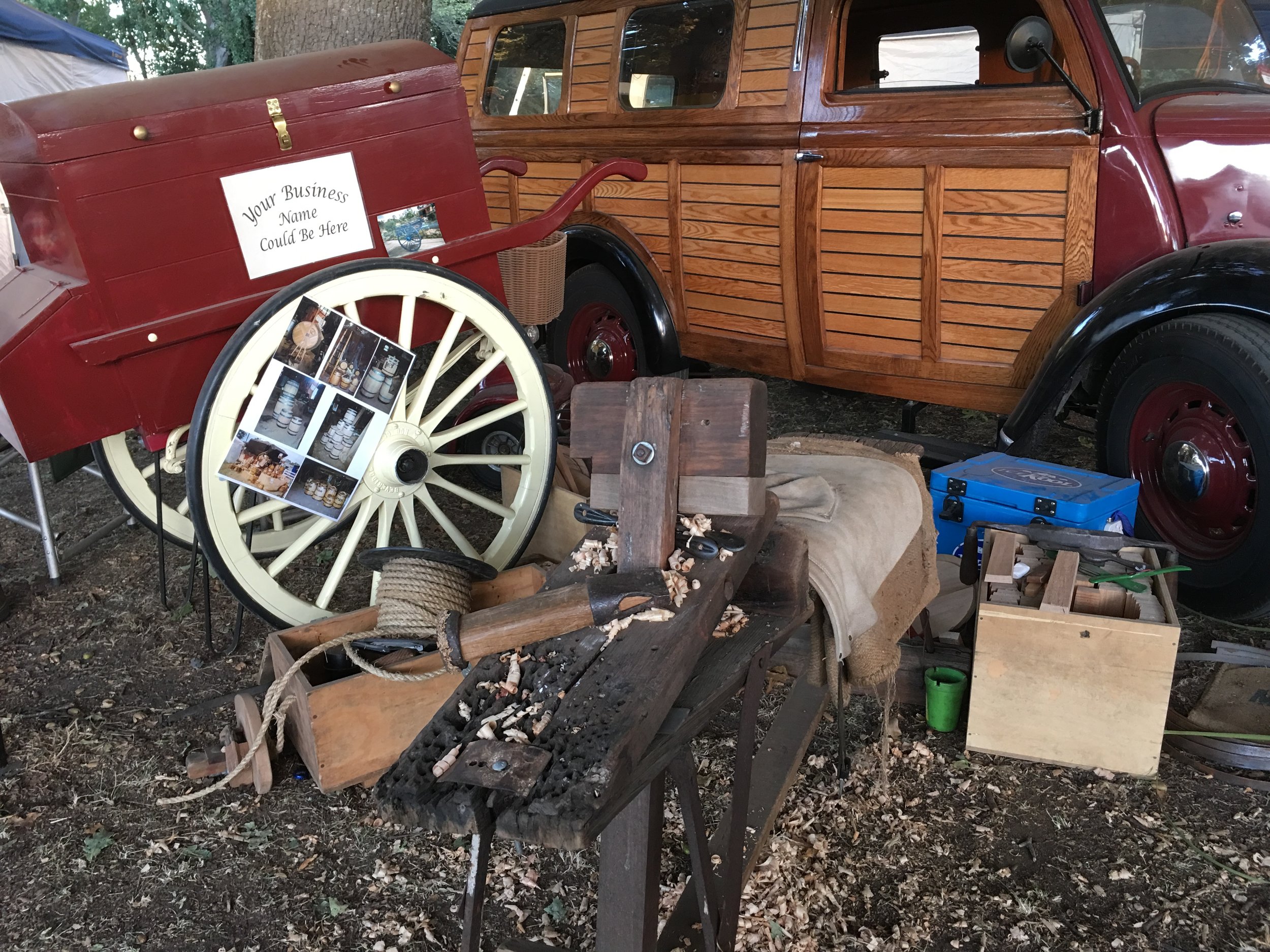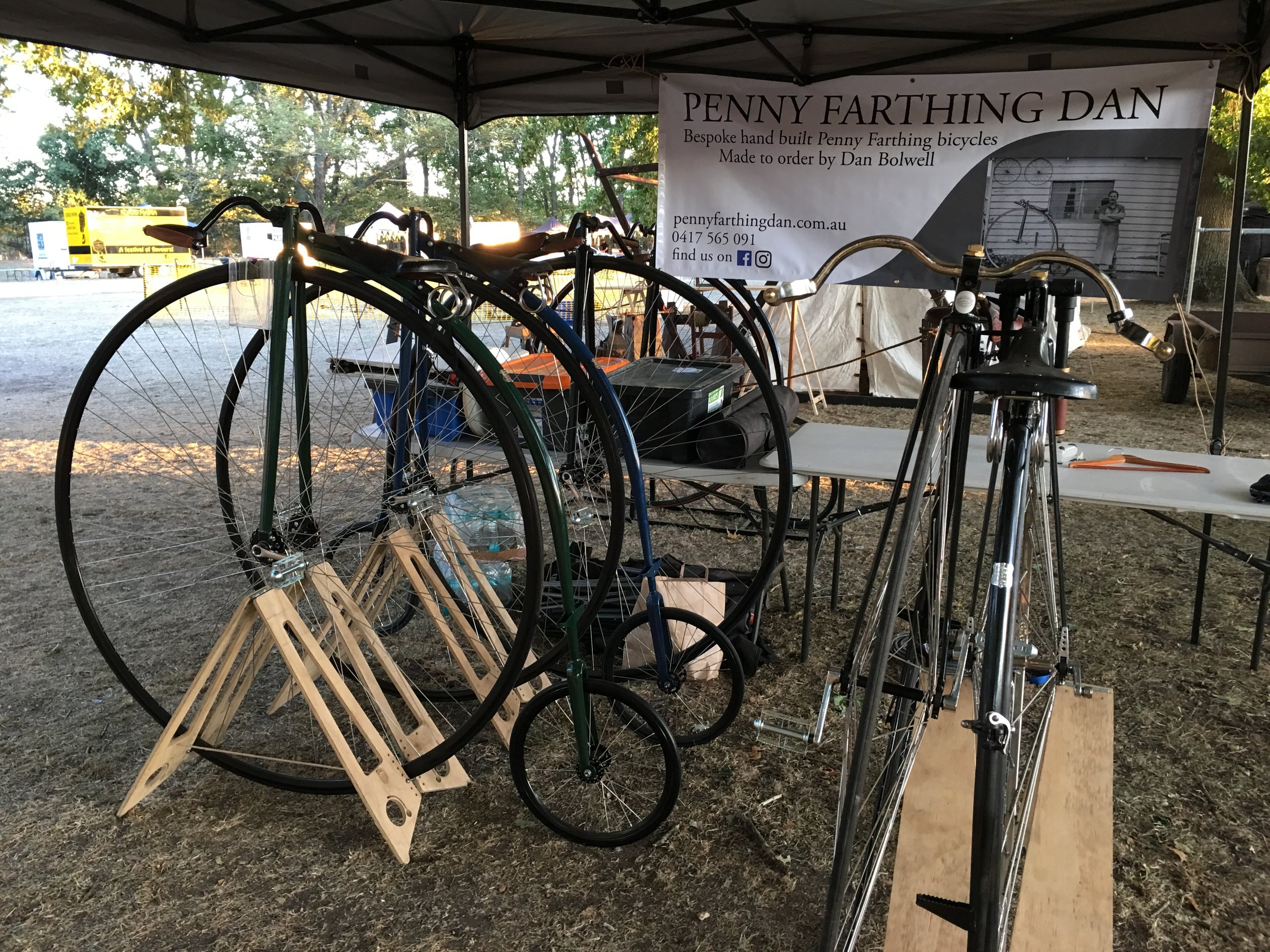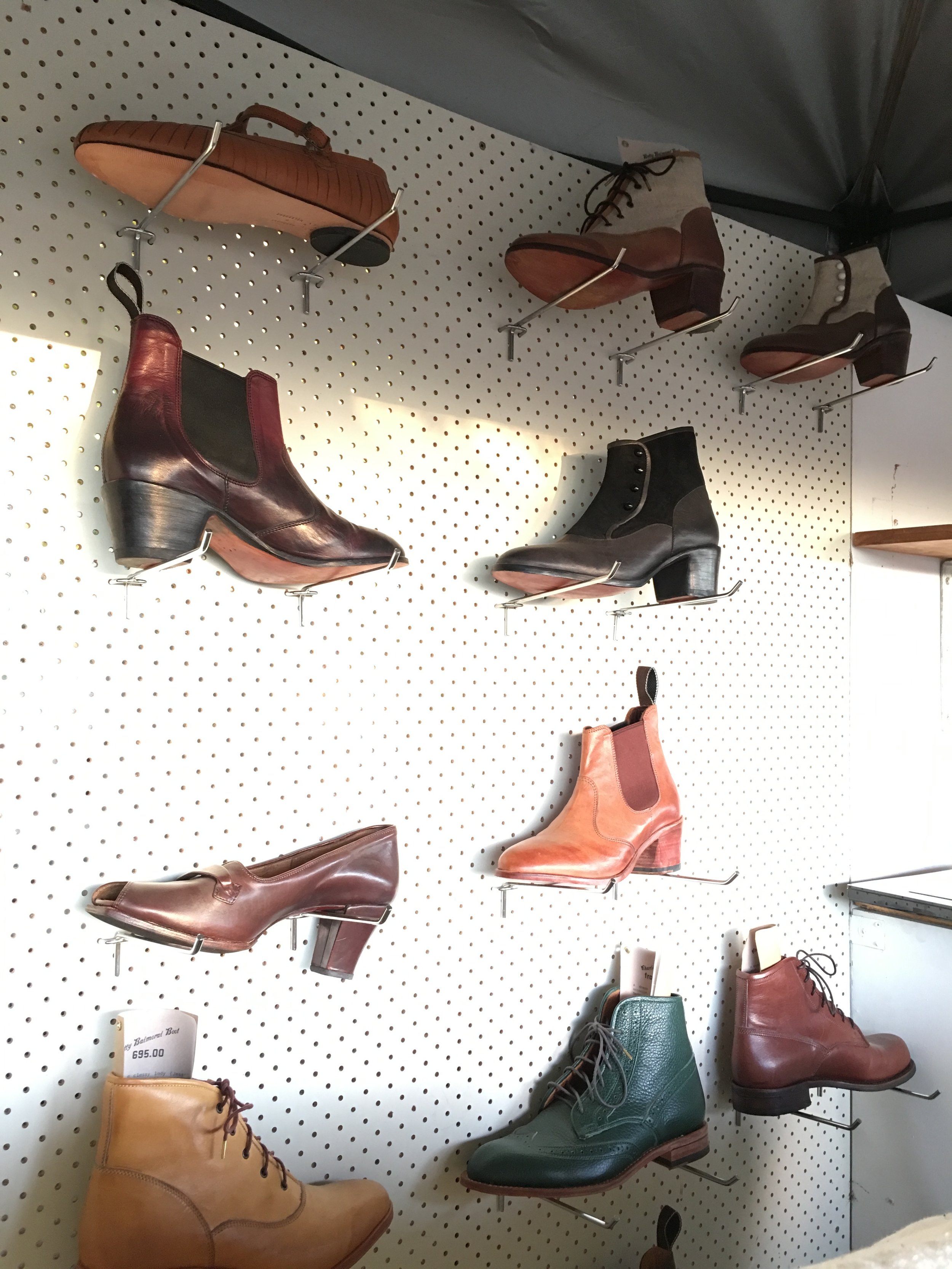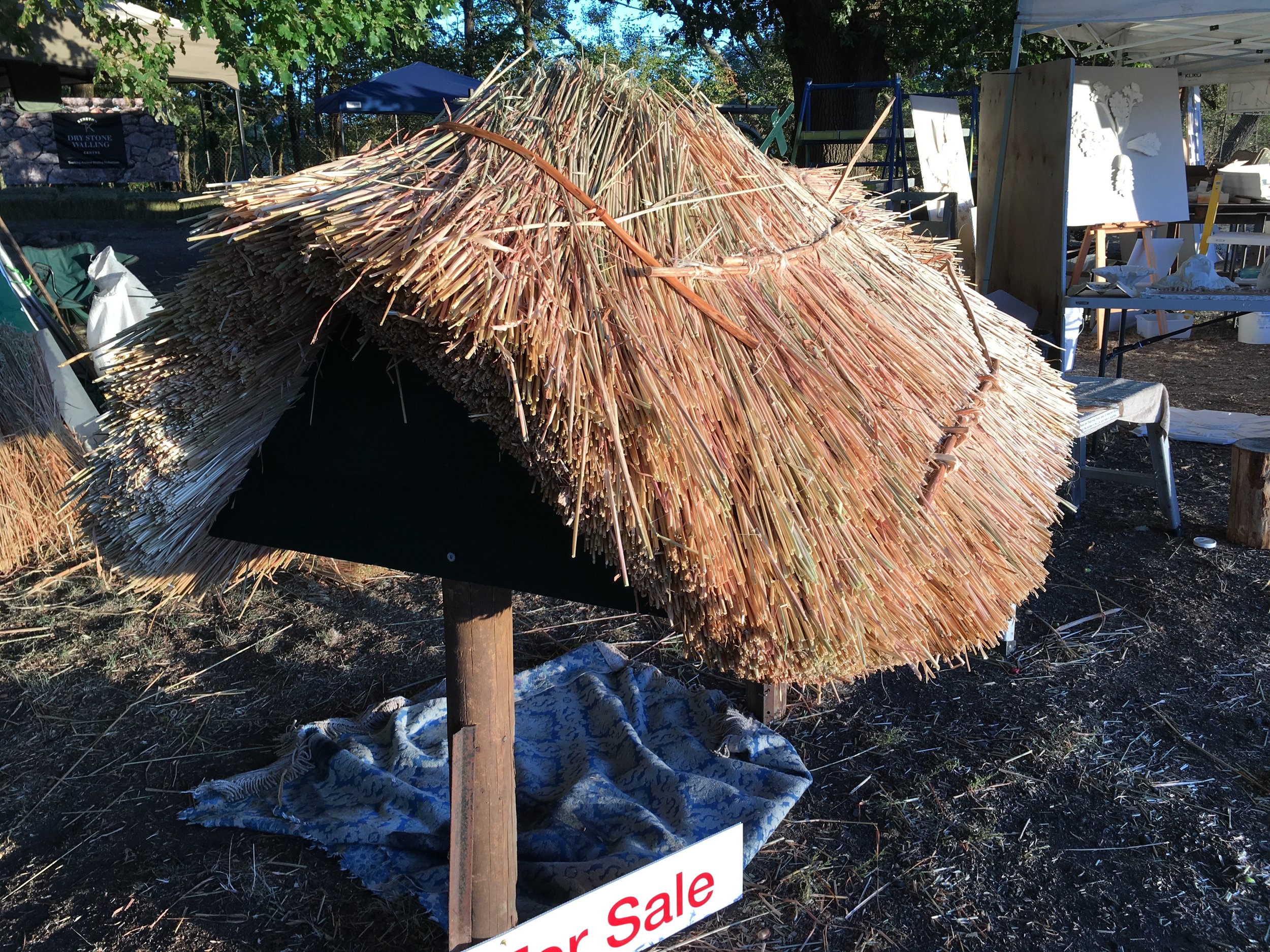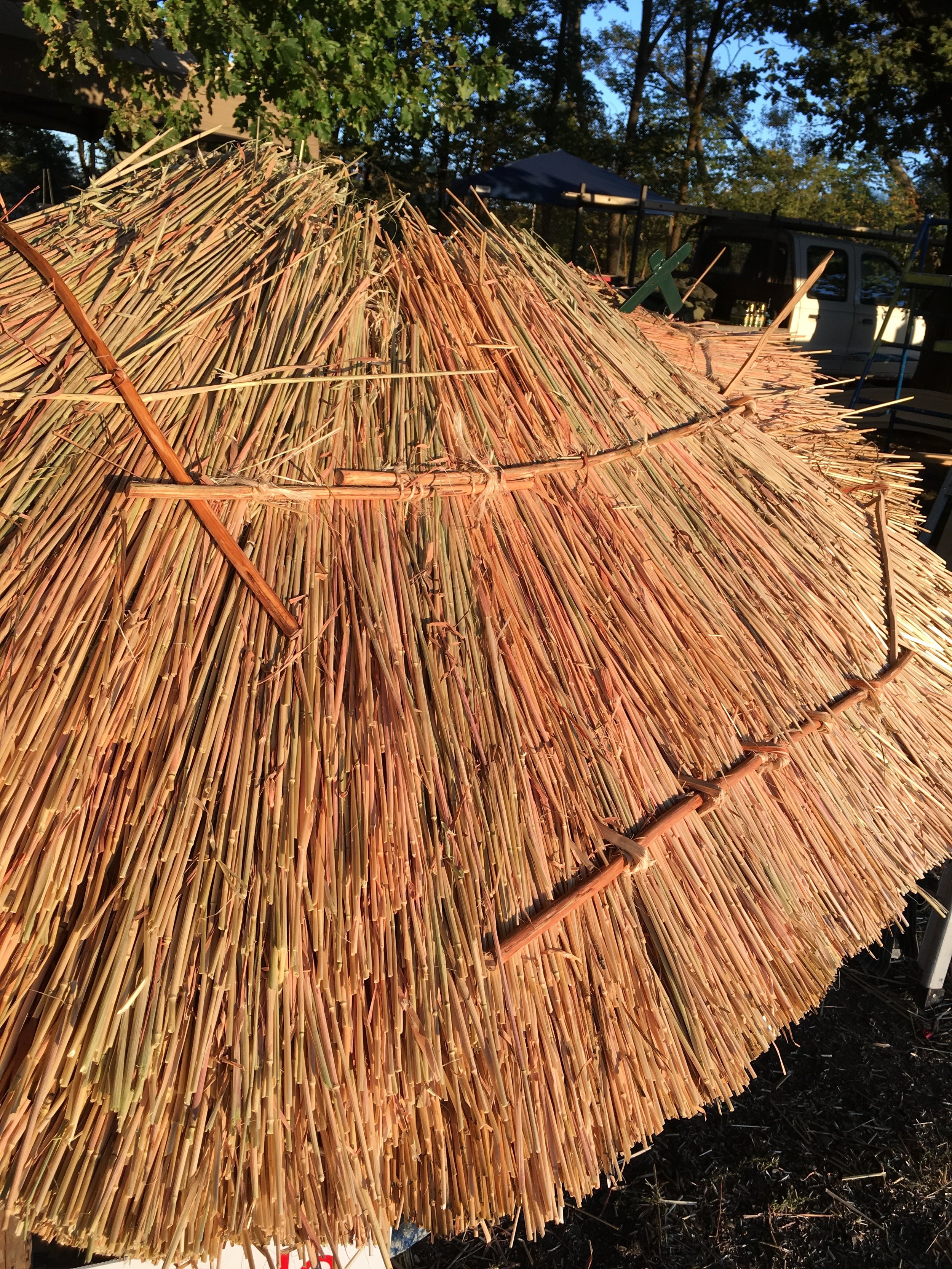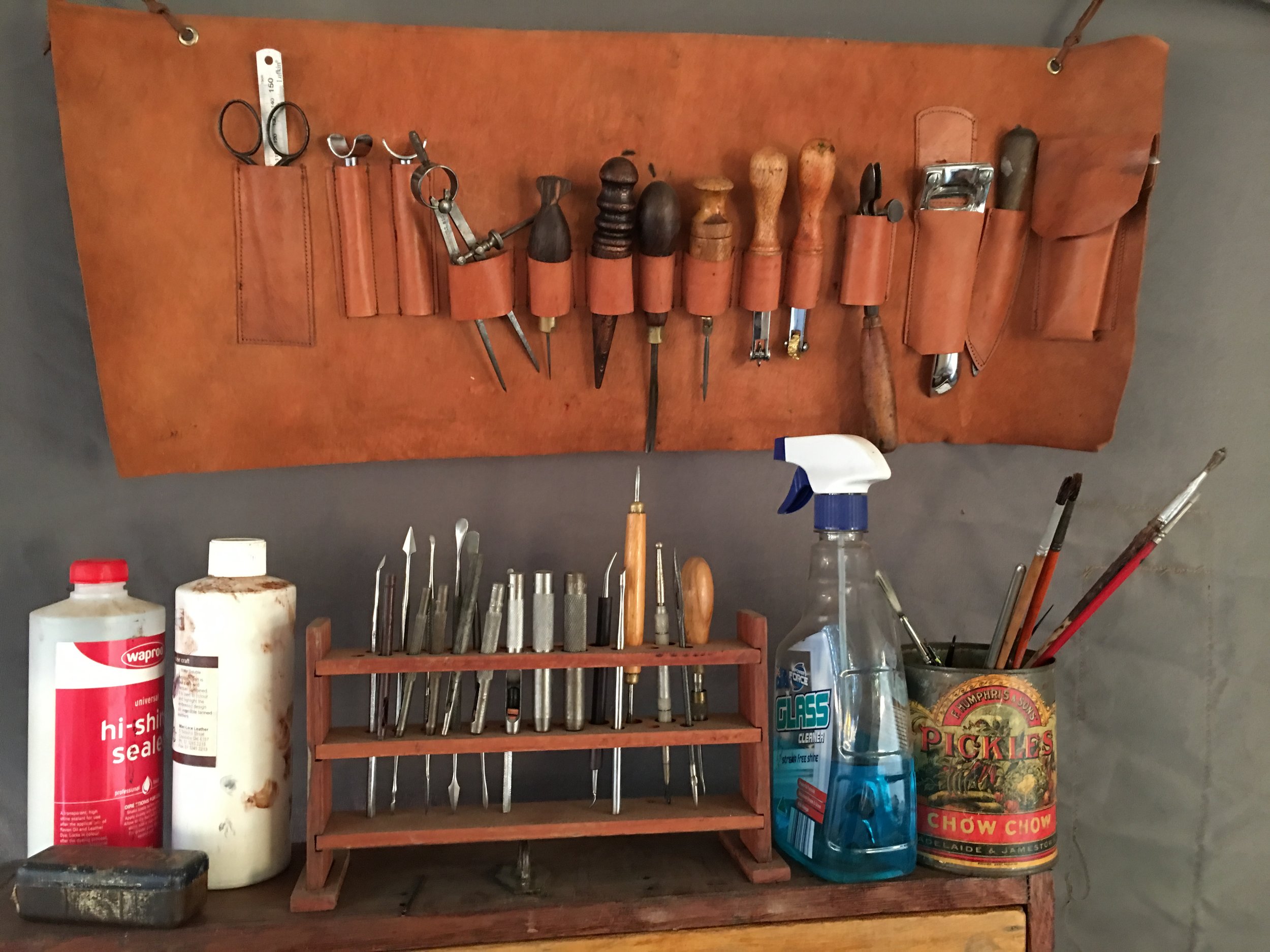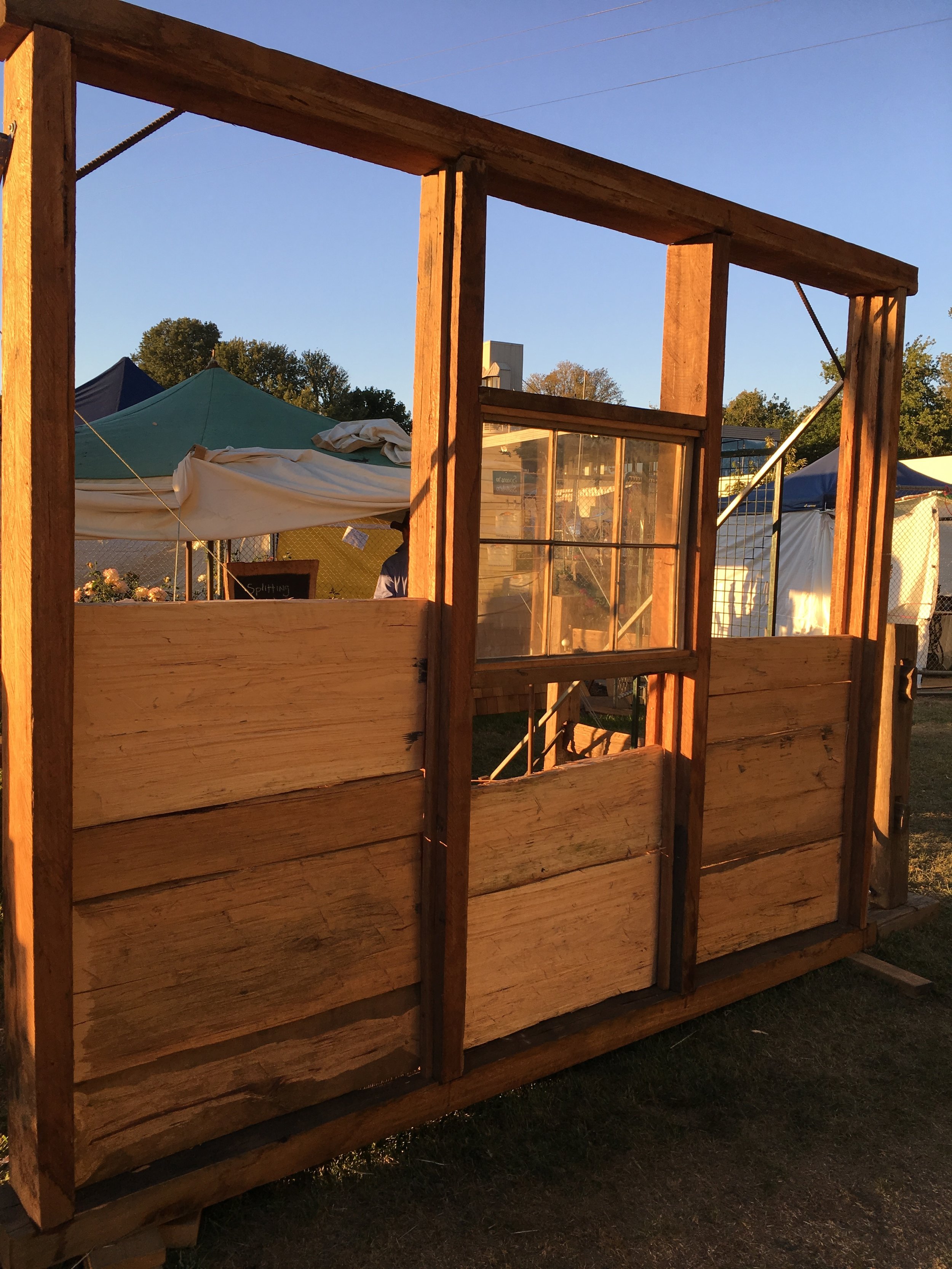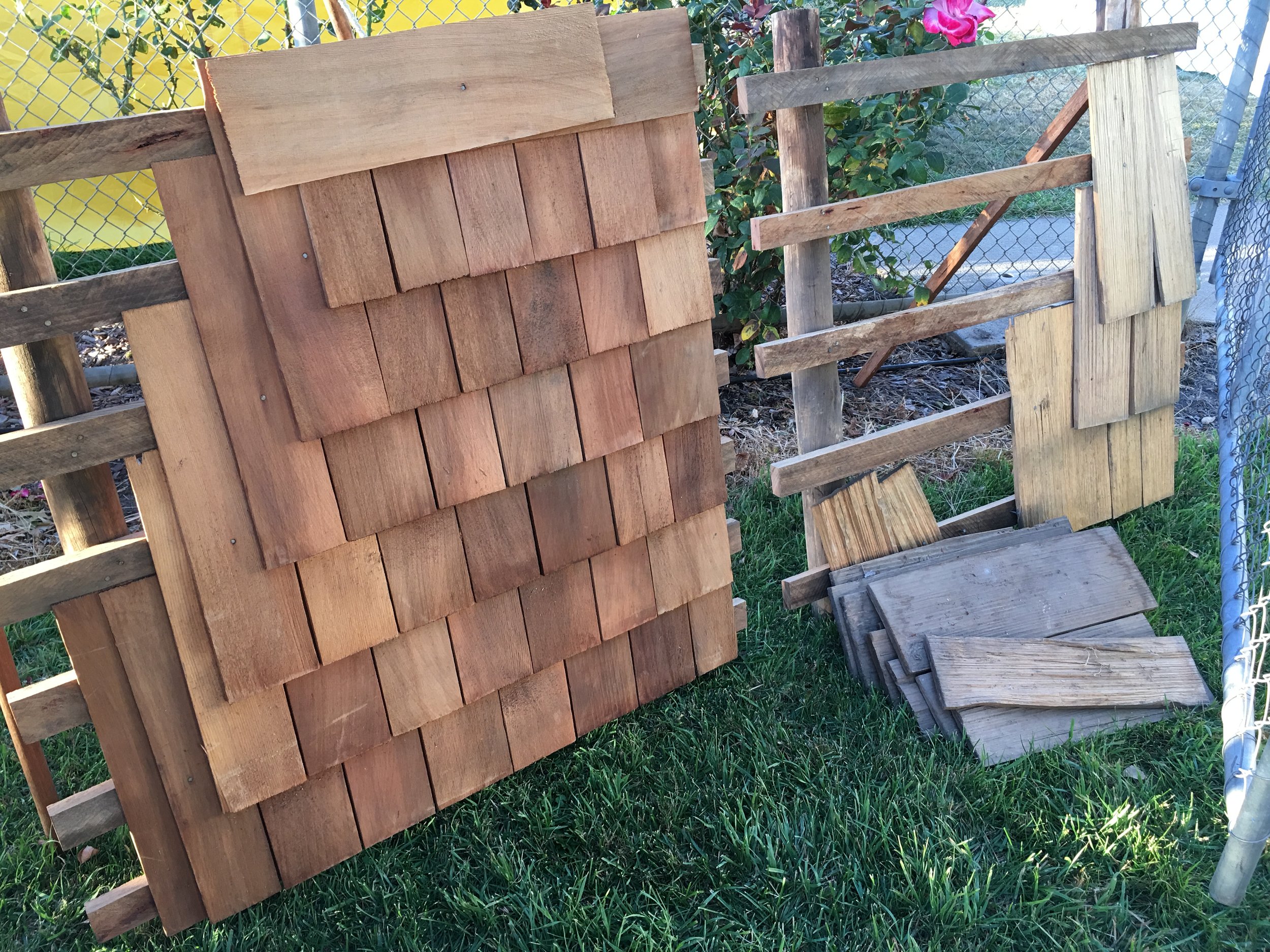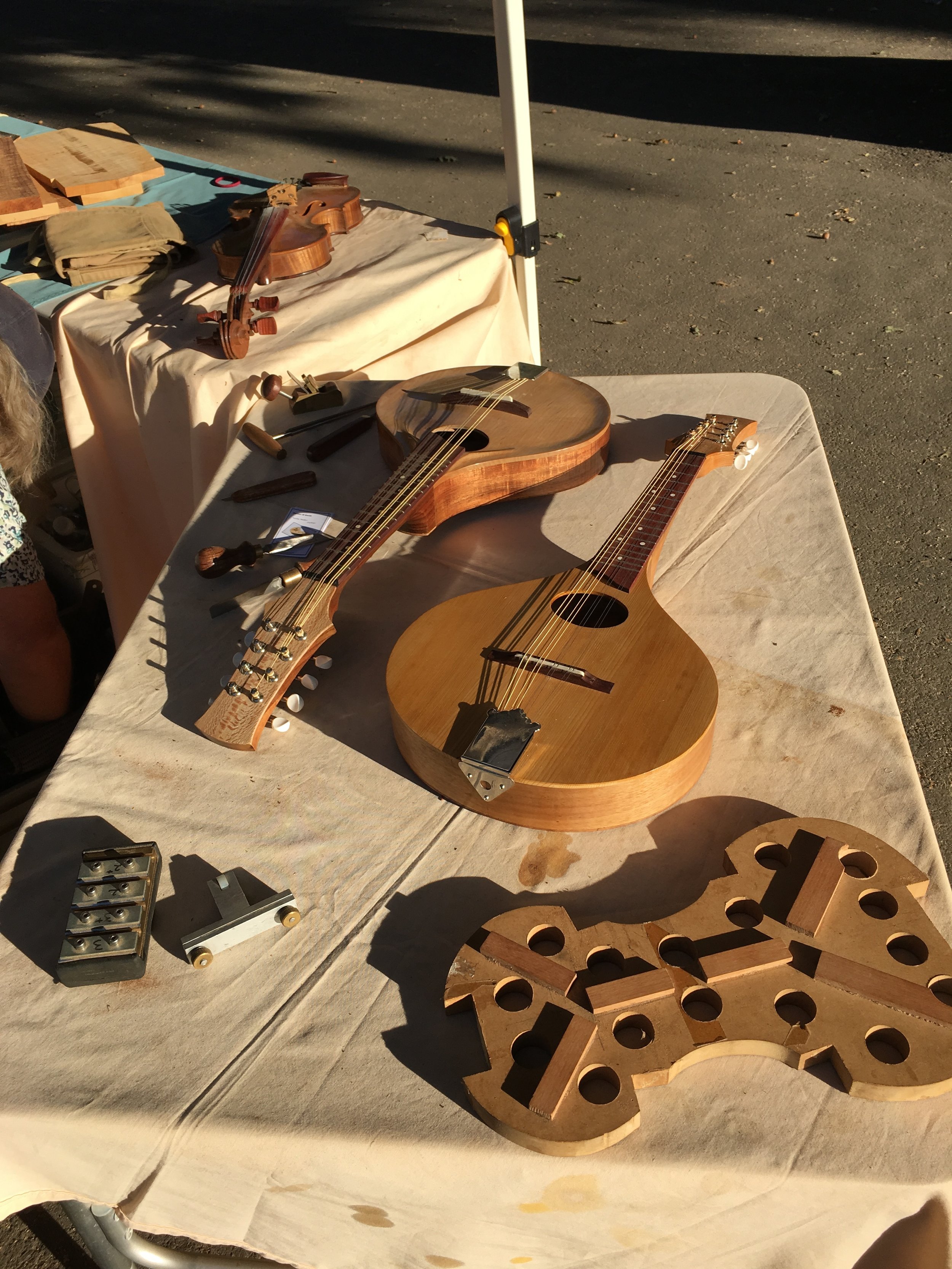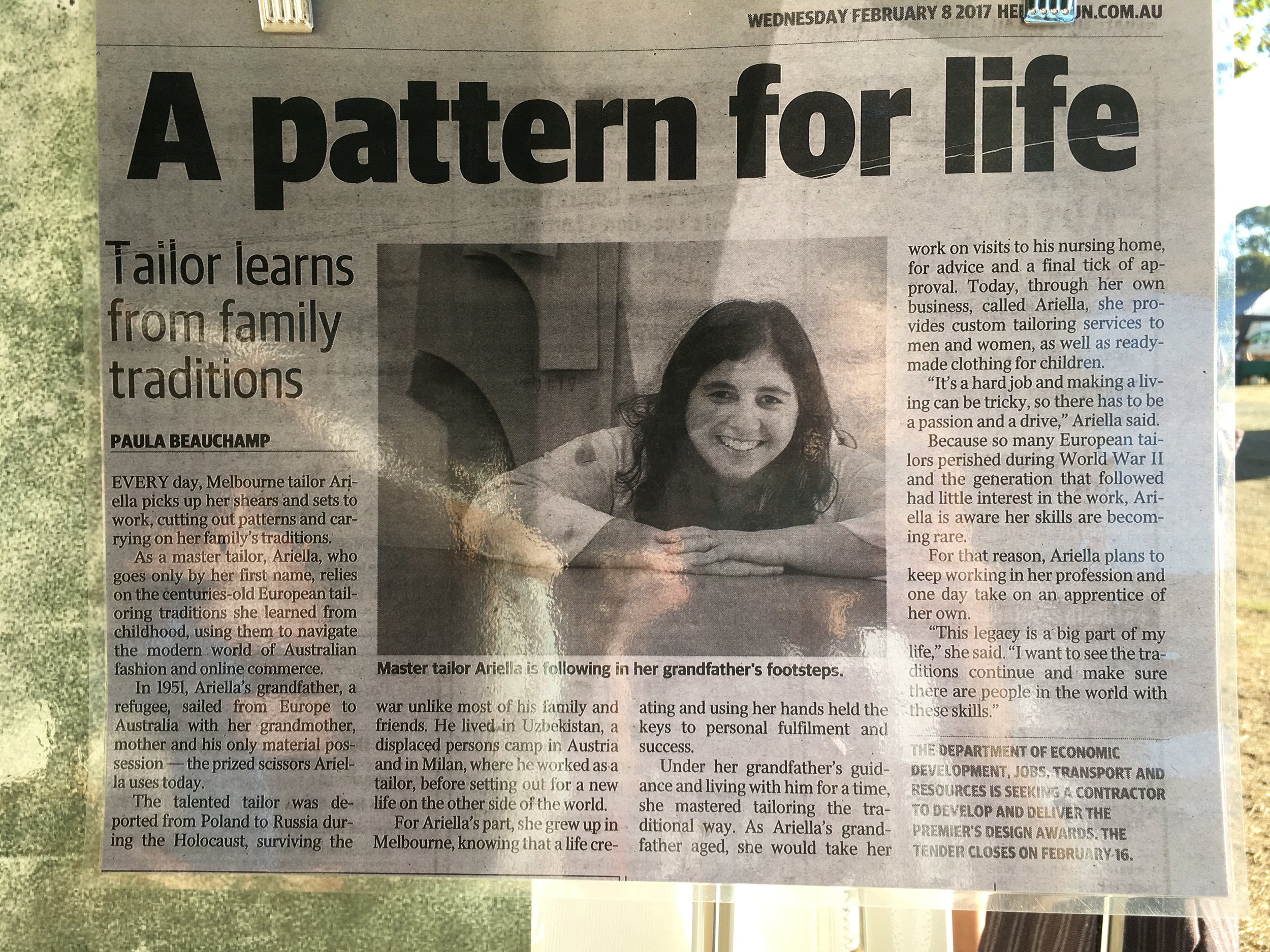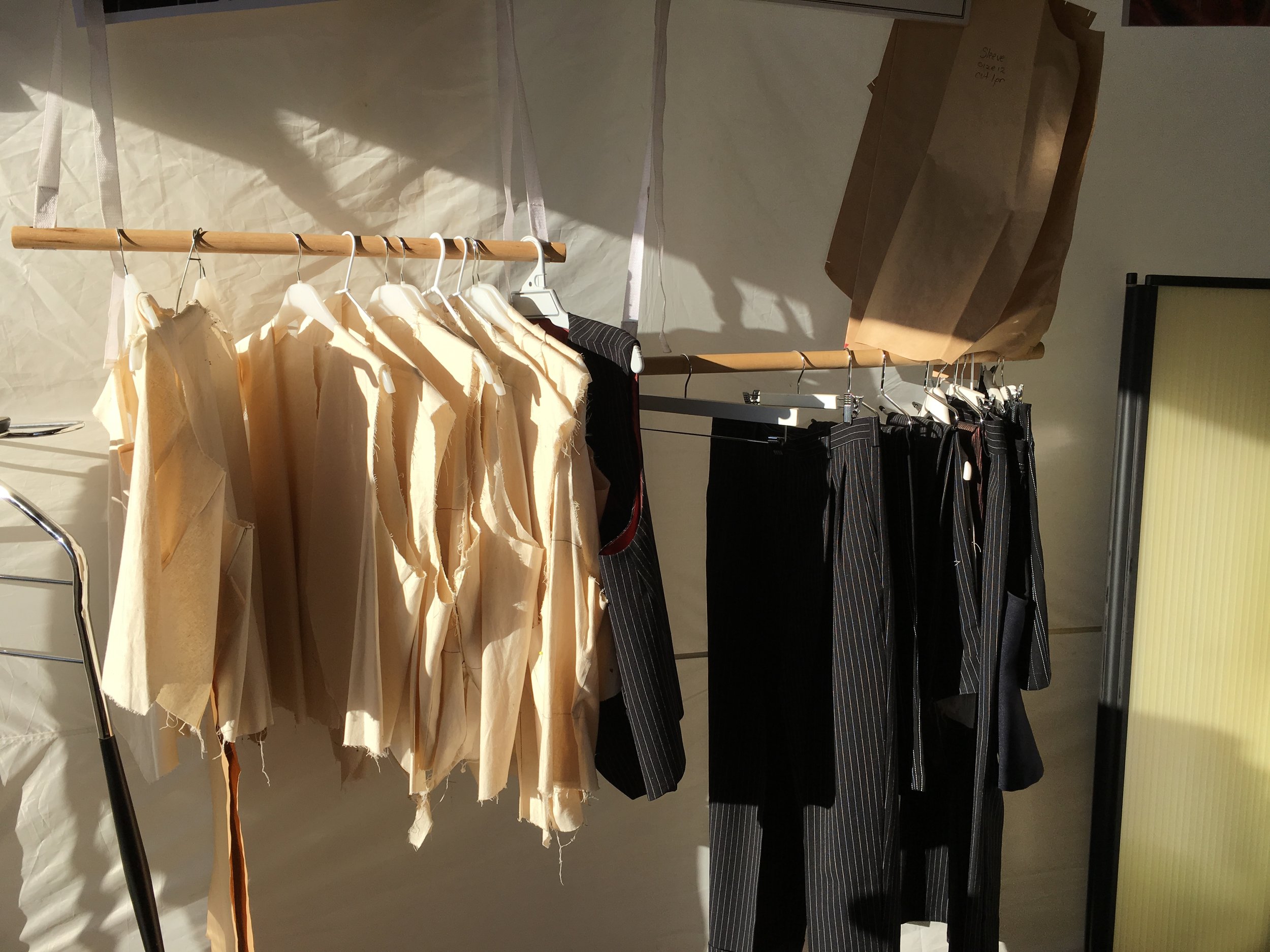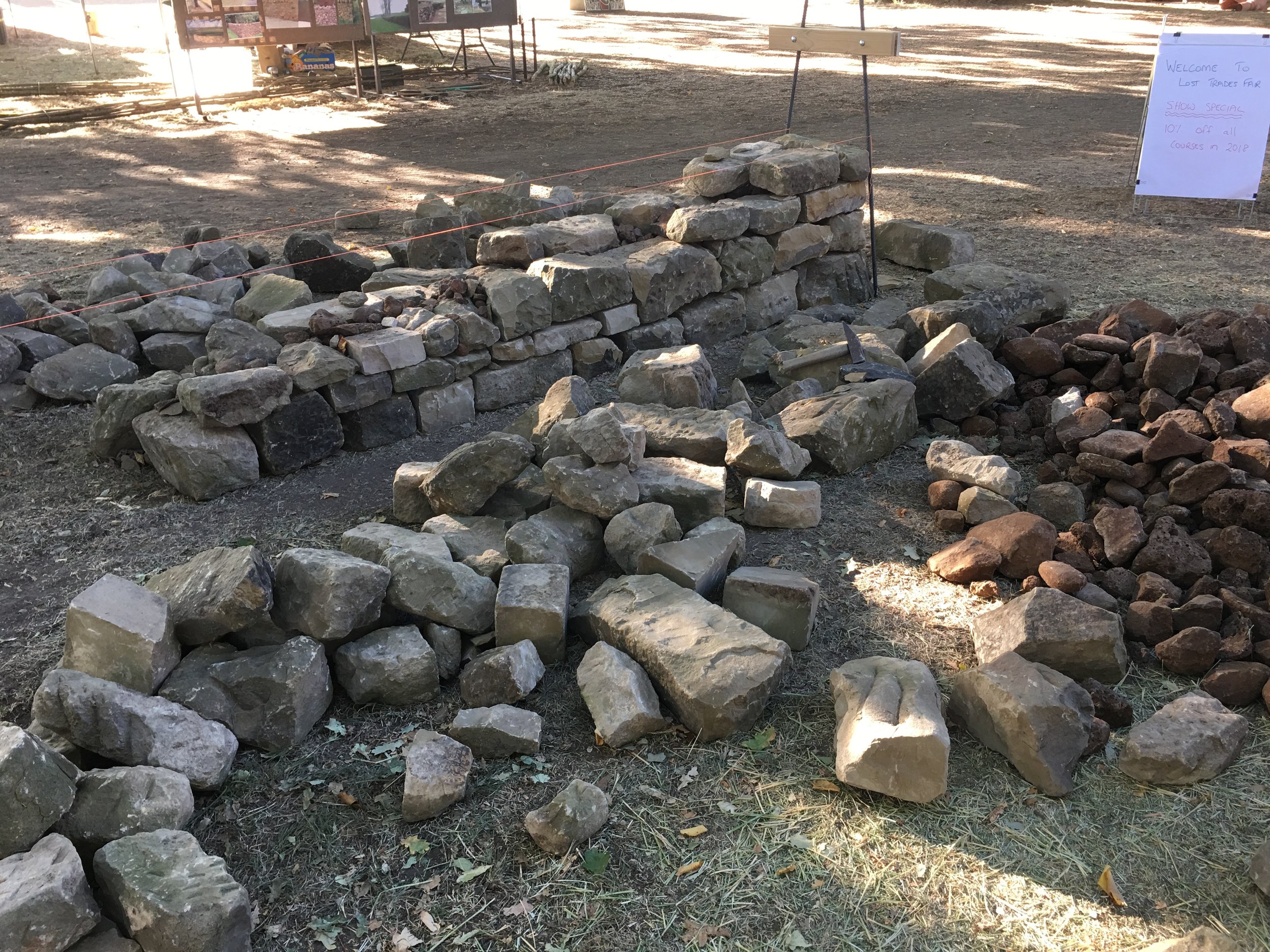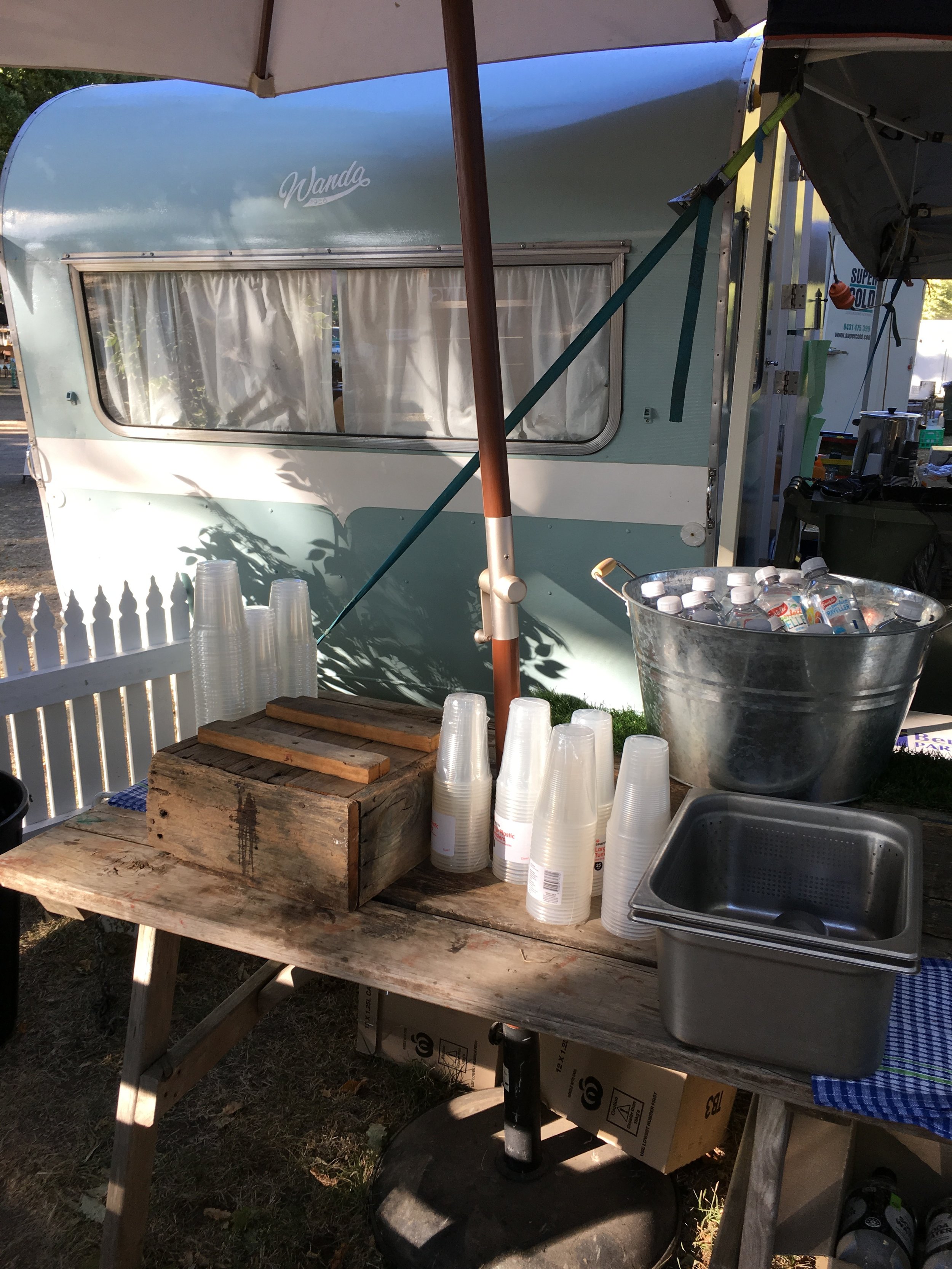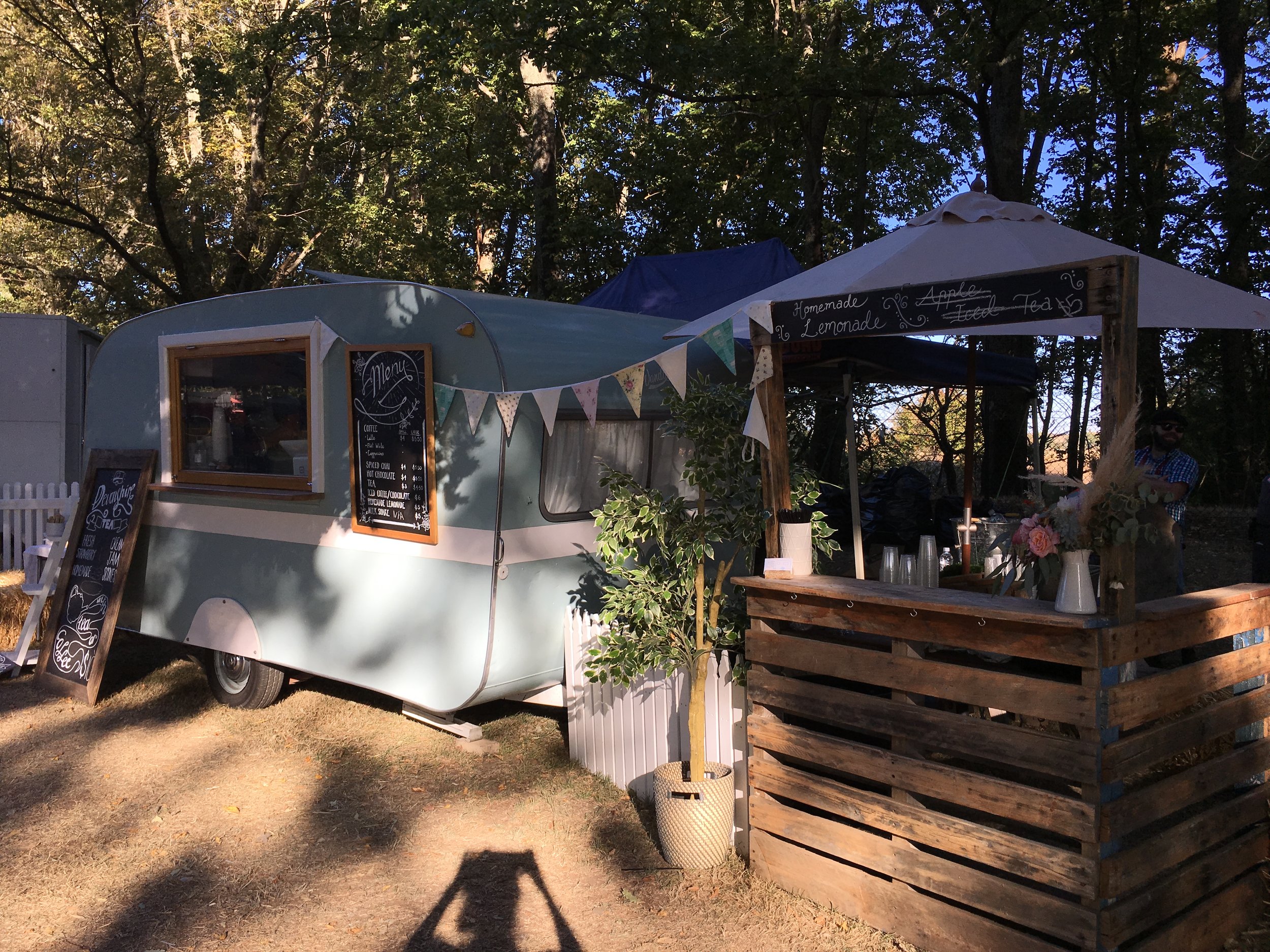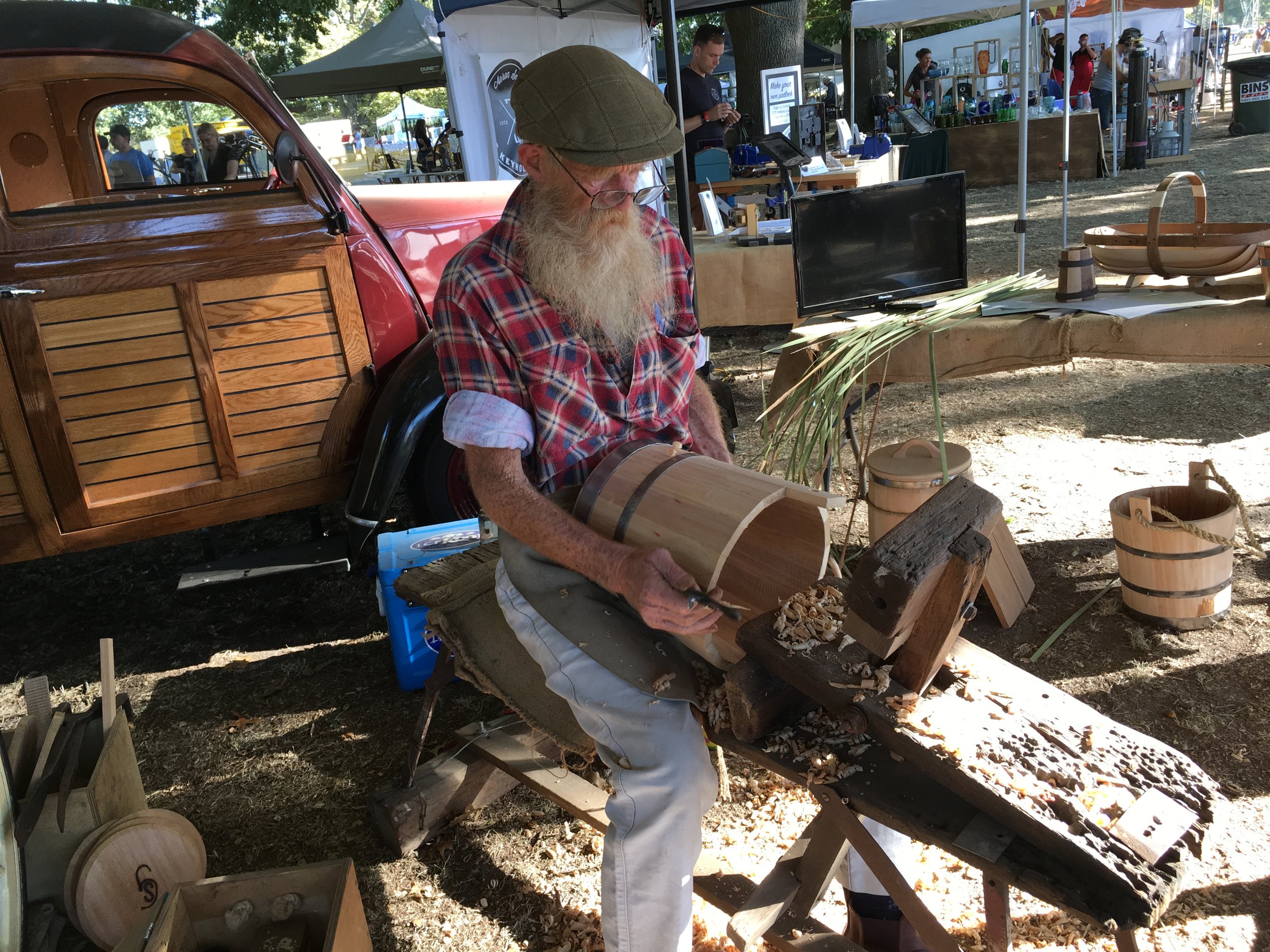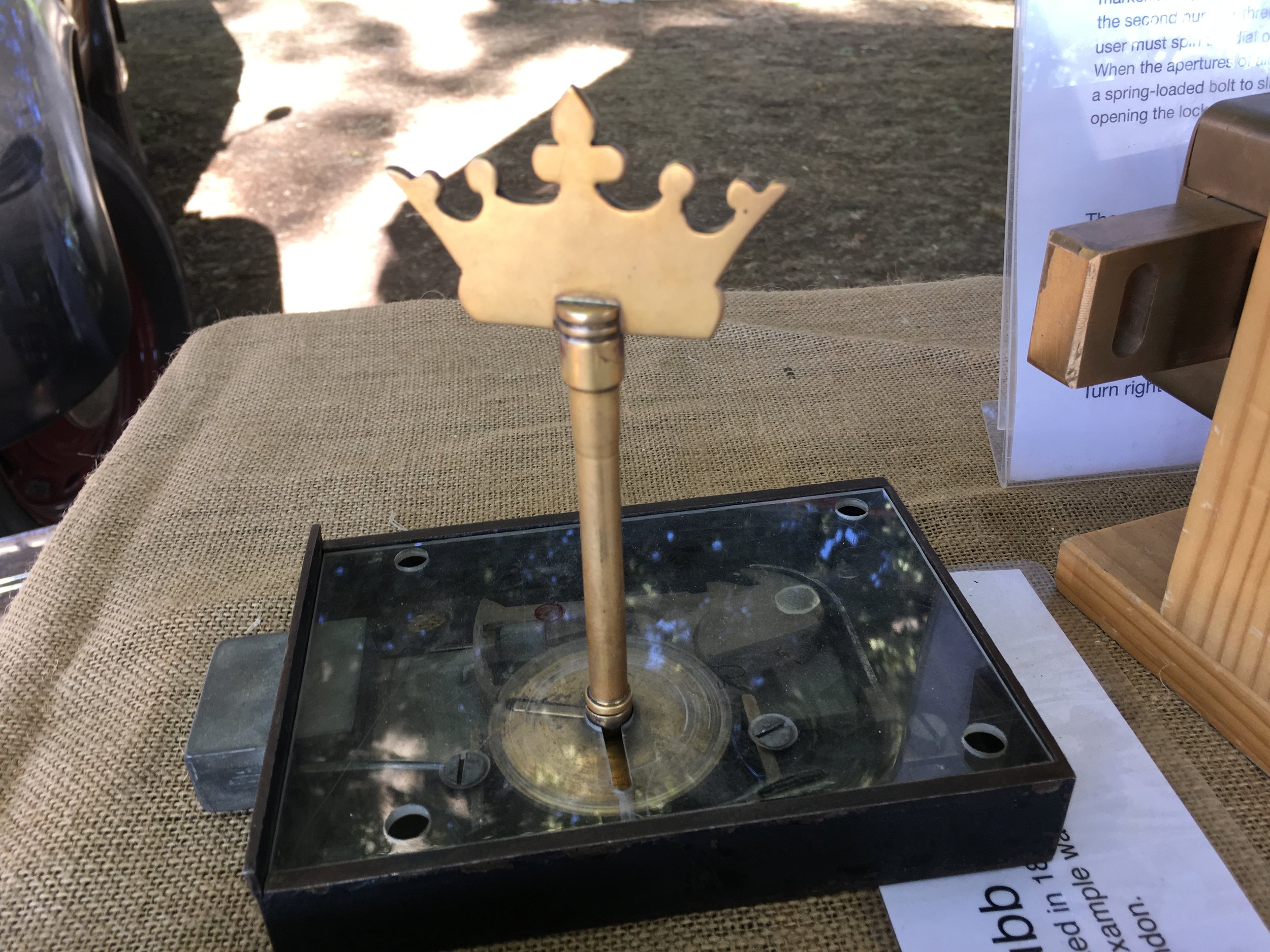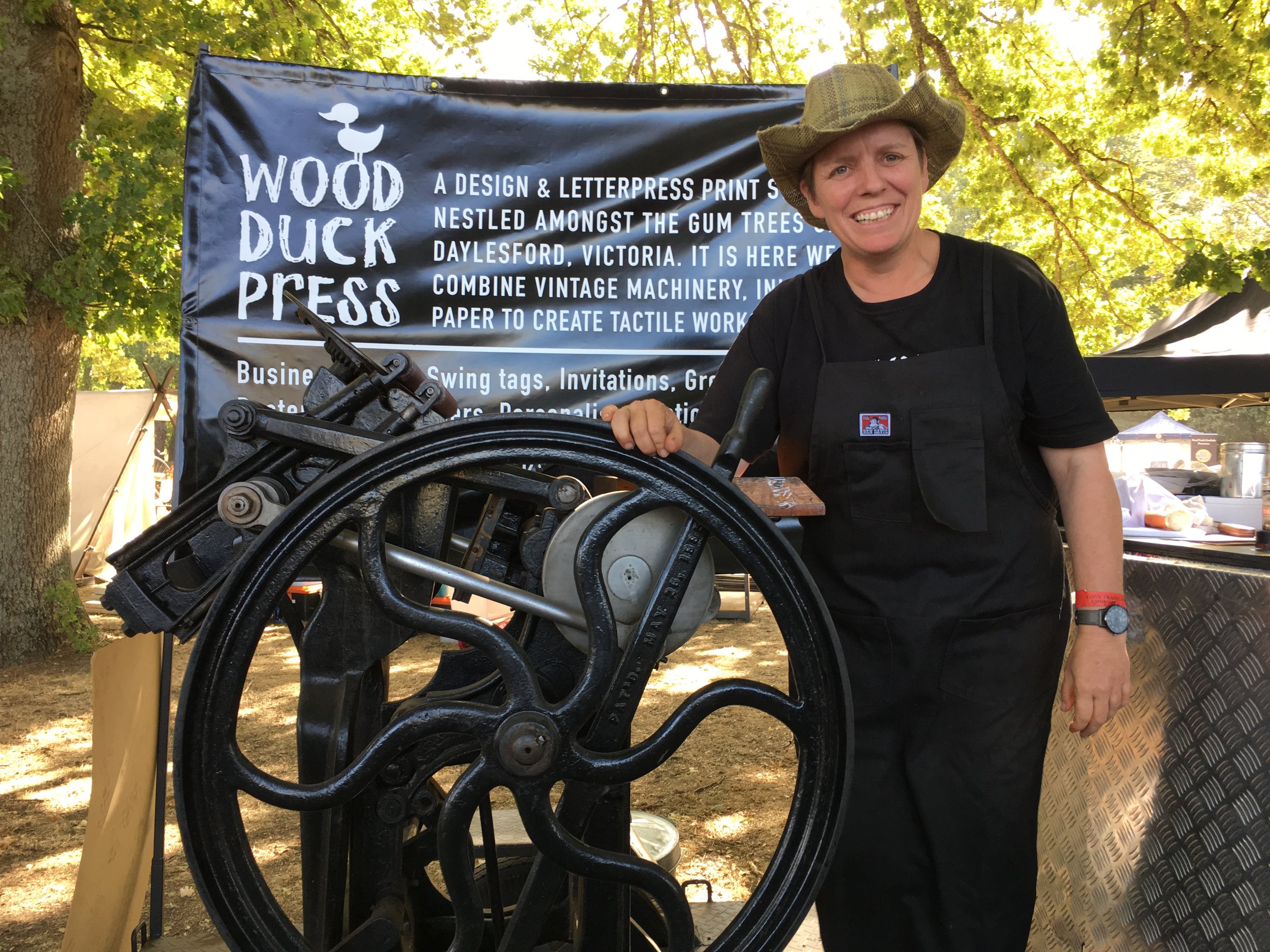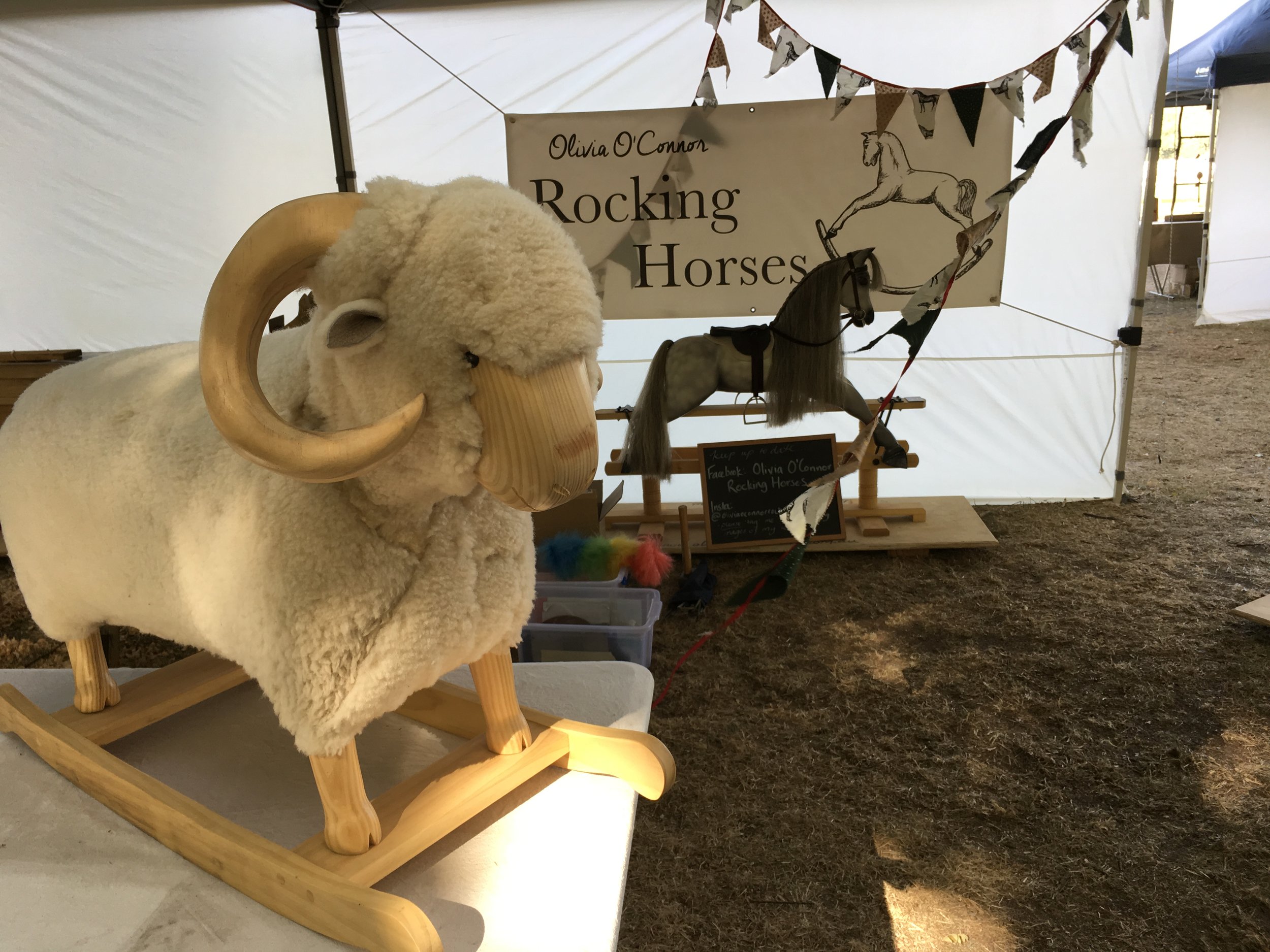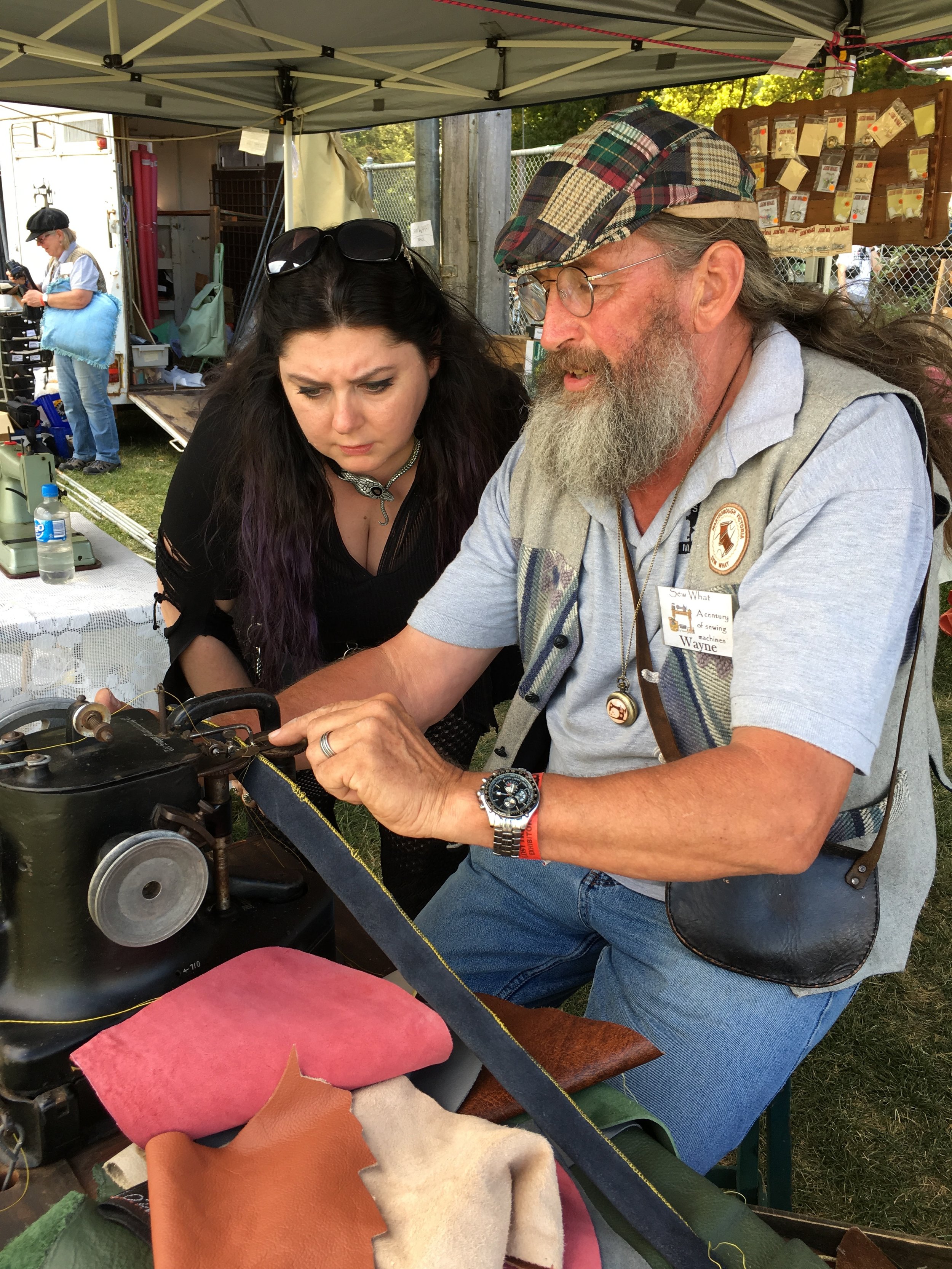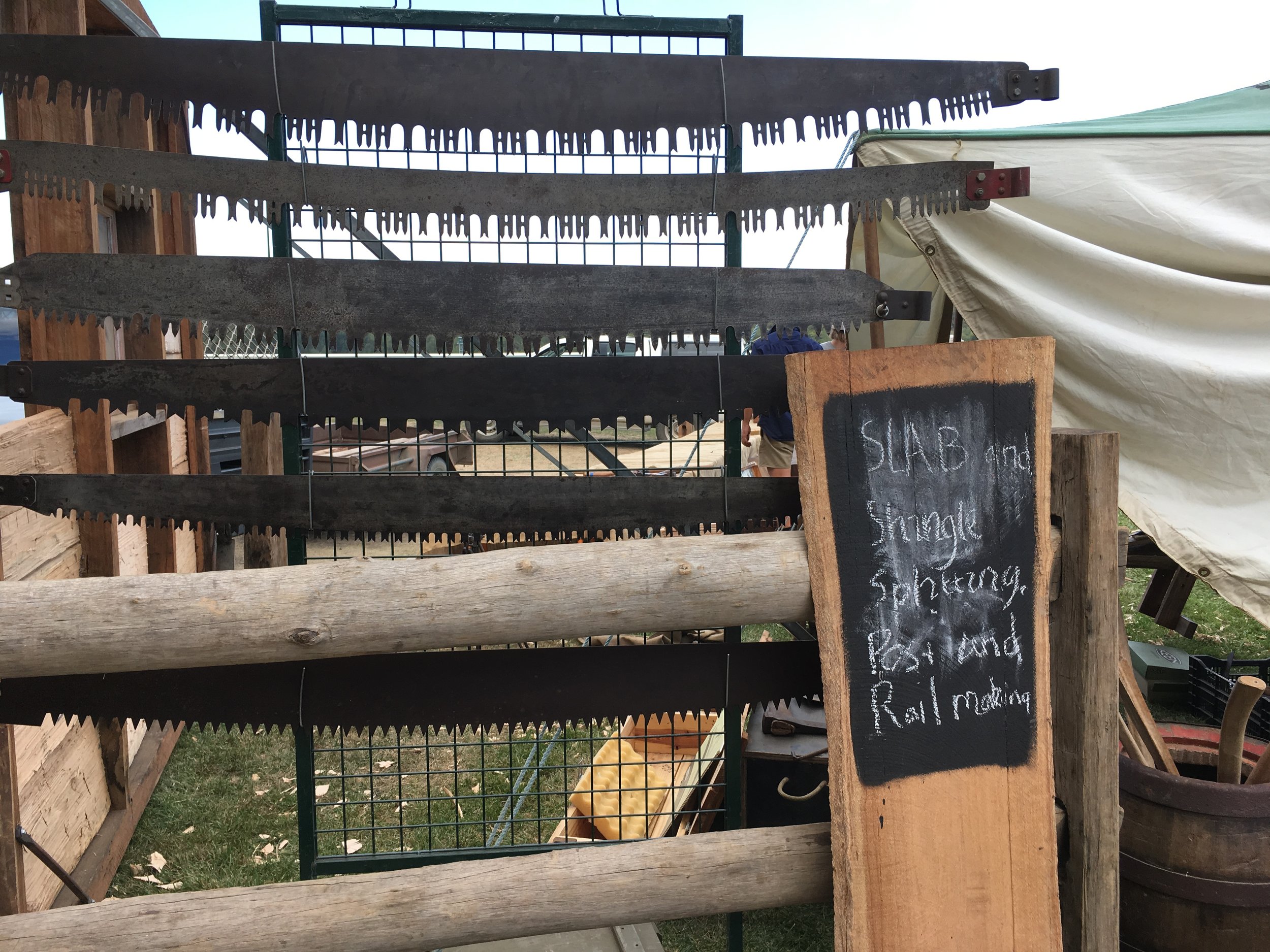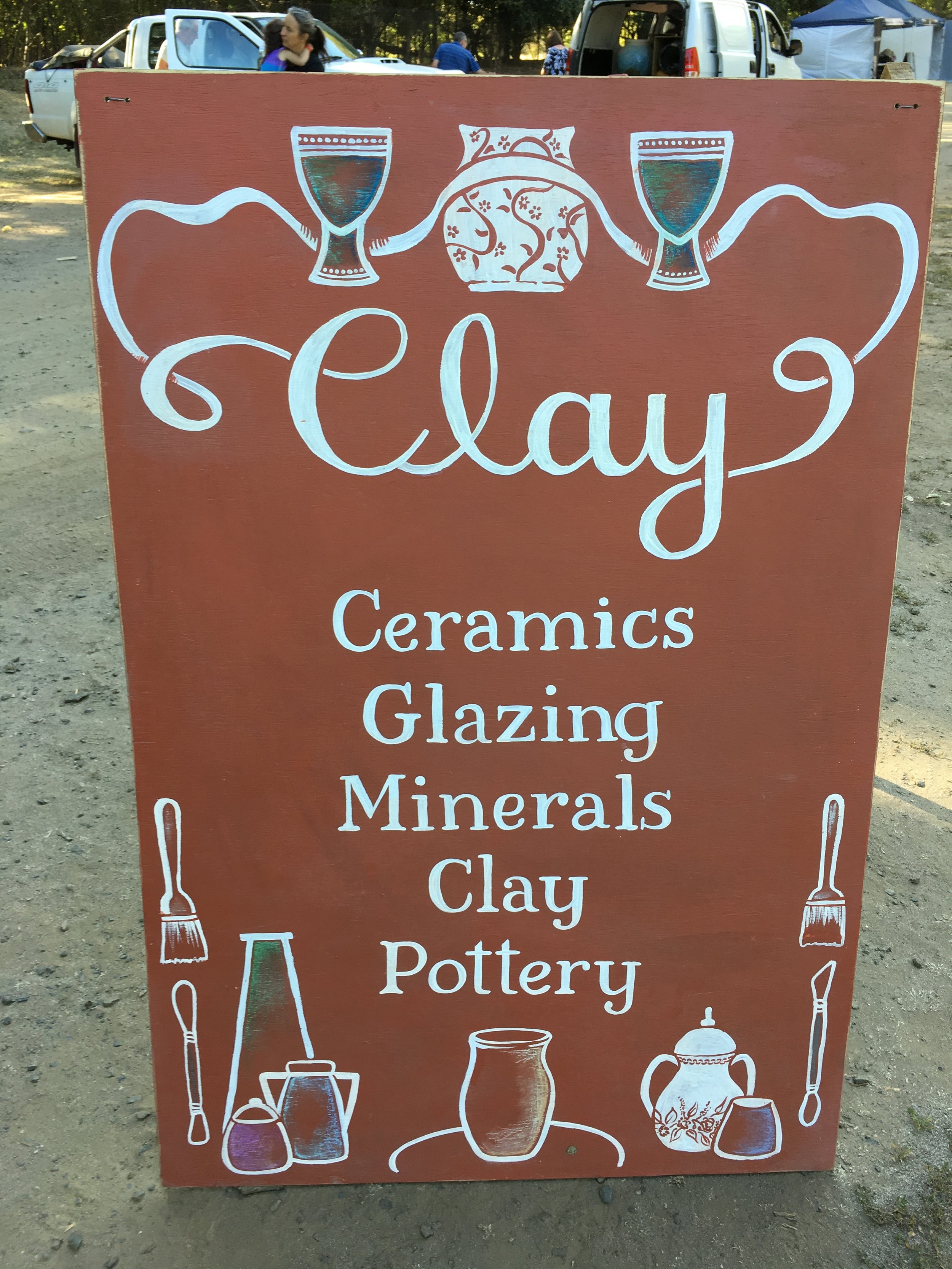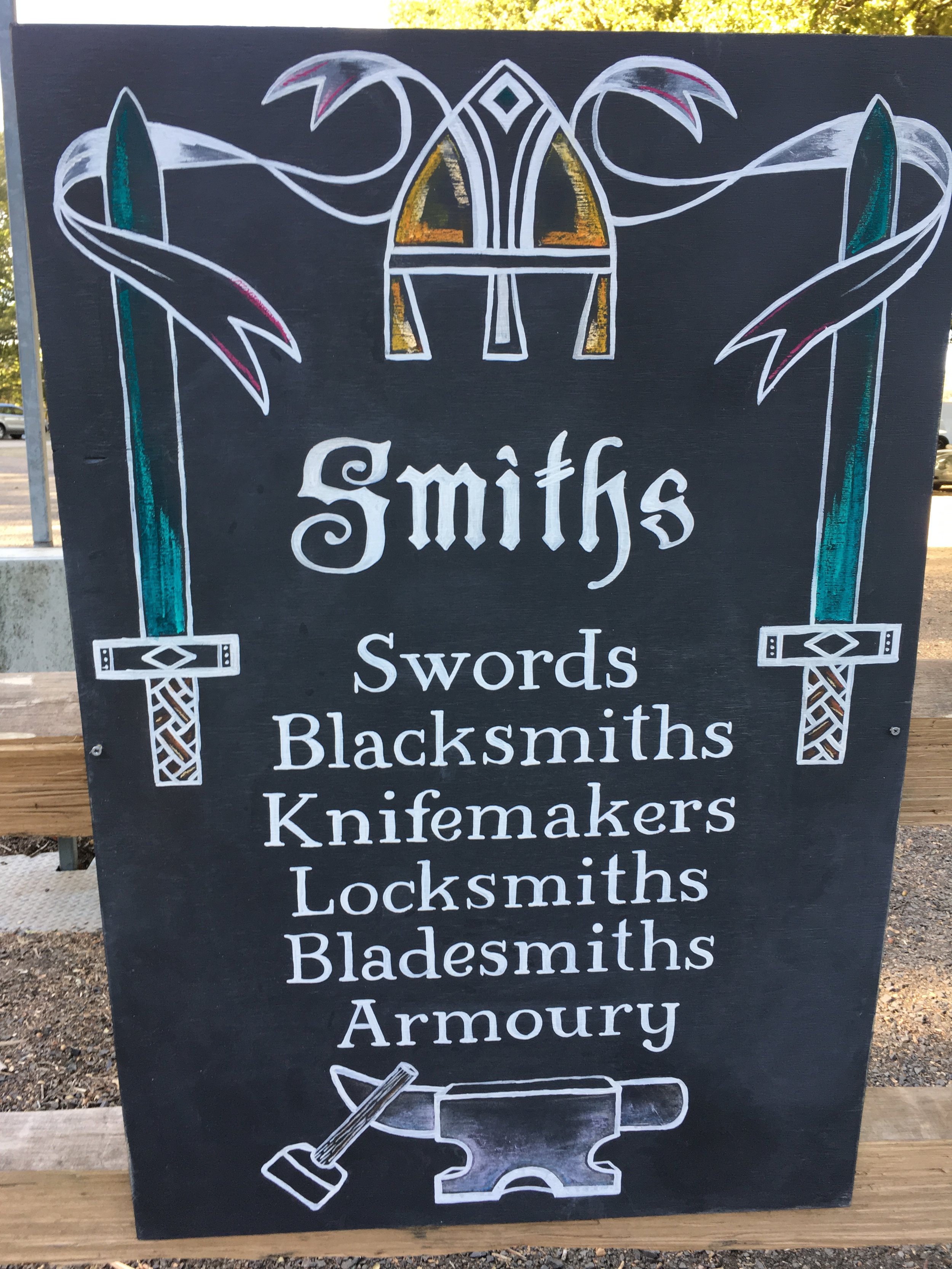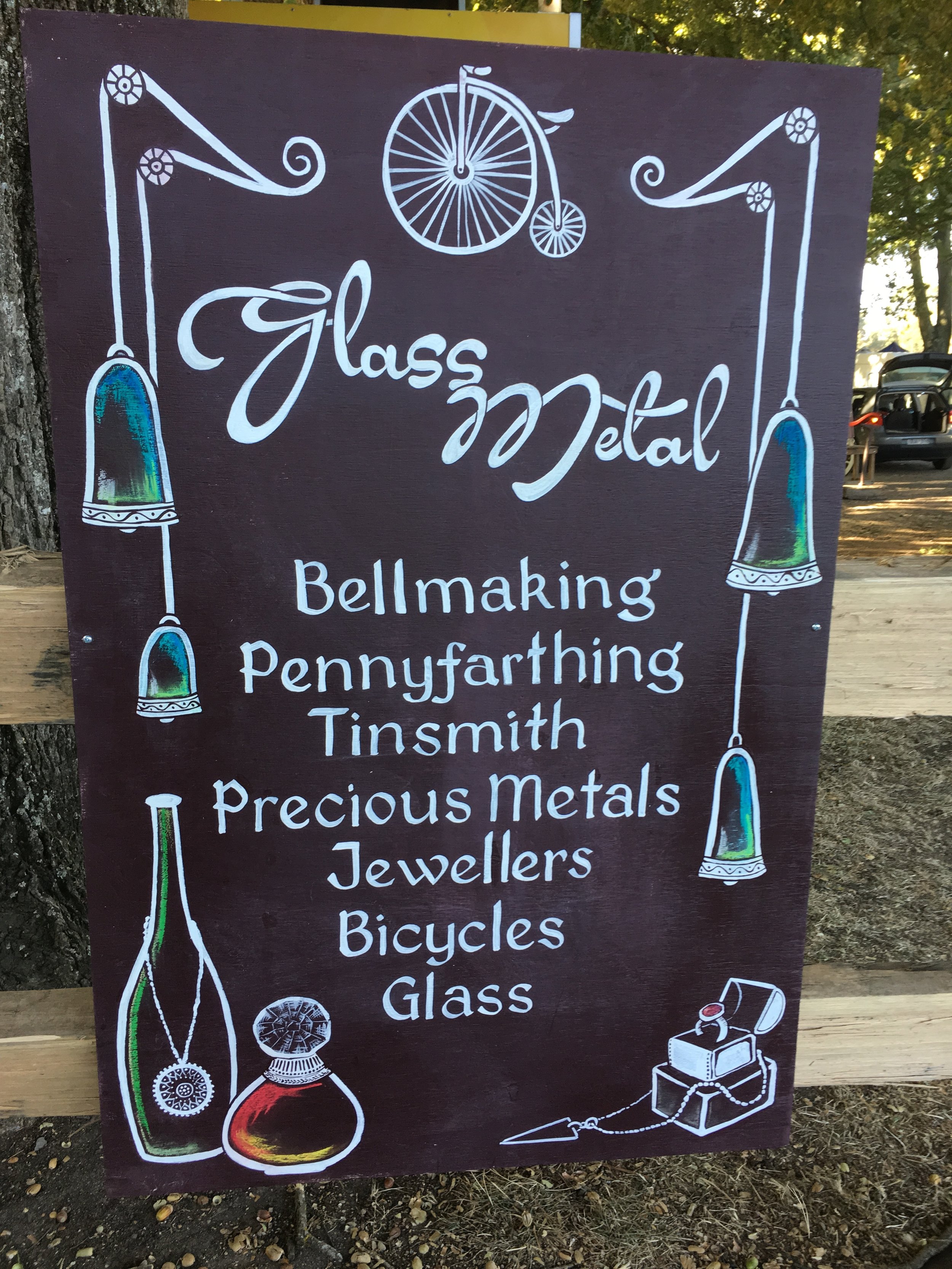'Lost Trades Fair Australia' welcomed "Silhouettes By Hand" Down Under
The Lost Trades Fair Australia was established to present and celebrate rare and lost trades, and the incredible artisans and real makers, their skills, incredible craftsmanship and share their knowledge. Silhouettes By Hand's artist Lauren Muney was invited to travel from her home of Baltimore, Maryland, USA to Australia - over 24 hours of travel, spread over two days - to demonstrate the rare historical trade of silhouette portraiture.
The Lost Trades Fair ("LTF") started in the state of Victoria, Australia, as a place for artisans of rare and "lost" trades to invite the public into the details of their craft.
Artisans from across Australia - especially Victoria, Queensland (the location of the October Lost Trades Fair), New South Wales, and South Australia - invited visitors to fall in love with their passion, their hands, their skills, and their heart for tradition. In March 2018, the Fair invited three American artisans.
The artisans of the Lost Trades Fair advocate hand-made product for long-term quality. Video shot and edited by Appstar Media, Kyneton, Victoria, Australia.
In their own words:
Lost Trades celebrates the art of skilled manual work, ancient crafts and rare trades, the special tools, traditions, languages and secrets that go hand in hand with these trades, passed down through generations. Many crafts and trades have been lost to history; traditional trades and industries that once were the backbone to building our country have fallen from our landscape in the wake of new technology, mass production and an 'on demand' culture.
The Lost Trades Fair was established to change this; these trades and the incredible artisans and real makers who continue to pursue these trades as a career deserve a platform to showcase their skills, incredible craftsmanship and share their knowledge.
Lost Trades was founded in 2011, we hoped to find as many artisans, makers and traditional tradespeople as we could. The Fair focused on traditional trades and crafts - workshop trades and field crafts, household crafts and decorative arts.
It features woodworkers, chairmakers, coopers, tailors, printmakers, ceramicists, whipmakers, upholsterers and wheelwrights. It is not a craft fair - but includes spinners, weavers, hatters, milliners and textiles. Blacksmiths set up different types of forges, each working in a different way.
Trades represented at the fair are as varied as toolmaking, french polishing, horology, knifemaking, basket weaving and stonemasonry. Instrument makers and music were presented alongside bookmakers, saddlers and decorative arts, glass work, decorative plastering, gold leaf work and gilding. Life members and masters of the Artisans Guild give a rare insight into the incredible talents of tradespeople apprenticed at the prestigious London City & Guilds.
The ethos behind the Lost Trades Fair is one of discovery; finding what was lost and introducing you to the talented makers in this country that are pursuing careers in lost arts, rare trades and forgotten crafts. Keeping theses skills alive is what the fair is all about - so that they are not lost to history.
There are no set demonstration times as all the artisans at the fair will be demonstrating and sharing their trades skills throughout the fair. You will see the same trades and exhibits on each day.
[Source: Lost Trades website, http://www.losttrades.info]
The photos (above) by Lauren Muney.
Within the welcoming artisans, sights and smells of materials being pushed, pulled, manipulated, and turned into new creations, there are a wonderful range of local food makers serving fresh traditional food.
Silhouettes By Hand's artist Lauren Muney was invited to travel from her home of Baltimore, Maryland, USA to Australia - over 24 hours of travel, spread over two days - to demonstrate the rare historical trade of silhouette portraiture.
With Lauren's background as a variety-stage entertainer and her experience working with museum events and community events, she was able to step into the busy and crowded Fair days - meeting visitors from across the entirety of Australia. With 21,000 visitors over the two days of the LTF, people who had never seen silhouettes were able to learn about the history of this portrait form as it related to Australia's history, as well as Australia's colonial "sister", the United States, and its "mother", Great Britain.
The Lost Trades Fair shines as an example of exacting standards of producers and artisans. The producers present attention to detail, such as only locally-, sustainably- and ethically-made food and drink. The artists are vetted before, during, and after the event for high quality and passion towards the common goals of the Fair.
Without being a "craft fair", the Lost Trades Fair invites the public to understand the past as it is practiced in the present. For more information, visit the website http://www.losttrades.info/
Lauren Muney of Silhouettes By Hand mentioned in NPR article on historical skills
Lauren Muney, silhouette artist of of Silhouettes By Hand, was mentioned in National Public Radio (NPR)'s article on modern people continuing historic skills. Read an excerpt of the article here, and follow the link to the full article.
Lauren Muney, silhouette artist from Silhouettes By Hand, was mentioned in National Public Radio (NPR)'s article on modern people continuing historic skills.
The link is here: http://www.npr.org/sections/npr-history-dept/2016/01/21/463398647/american-history-lives-a-story-of-the-people-by-the-people-for-the-people
EXCERPTED FROM THE ORIGINAL ARTICLE:
American History Lives: A Story Of The People, By The People, For The People
Updated January 21, 20163:32 PM ETPublished January 21, 201611:11 AM ET
By LINTON WEEKS
Americans are doers. In the United States today, history is an action word. This is, after all, a participatory democracy, and people are participating in its history by volunteering, crafting, interpreting, reenacting, recreating and exploring the old — anew.
As the crowd of sources points out in this crowdsourced story, a fair number of our present-day neighbors in the United States dwell in the past — hunting or gathering or going through days (or parts of days) as their ancestors did. They dress up in vintage clothes, speak in distant syntax, use their hands and brains like citizens of yore. Teachers and interpreters demonstrate and explain antiquated activities. Growers adhere to time-honored methods. Makers shape things using the tools and materials of years past. Sellers hawk products today that were available 100 years ago and more. Companies continue to create centuries-old wares.
Some history lovers believe life was simpler long ago; still others have discovered it was actually pretty complicated.
And there are scads of people in every place — cigar-box guitar maker Bruce Graham in New Hampshire; blacksmiths Lewis Meyer in Kentucky, David Osmundsenin Wyoming and Mike Hensley in North Carolina; leatherworker Cliff Pequet in Indiana; chair caner Cathryn Peters in Minnesota; textile evangelist Abby Franquemontand decoy carver Laurel Dabbs in Ohio; ladderback chair maker Russ Filbeck, farrier Erin Simmons,winemaker Kat McDonald and invitation designer Kari Dias in California; broommaker John Potter, the book preservationists at Eidolon House and bookbinder H. DeLea Sayers in Texas; potter Reggie Britton Delarm and cheesemaker Sister Noella Marcellino in Connecticut, potters Brenda Hornsby Heindl in North Carolina and my cousins Dale and Brin Baucum in Tennessee; schooner chef Anna Miller in Maine; silhouette snipper Lauren Muney in Maryland; cooper Marshall Scheetz in Virginia; photographers Charles Trentelman in Utah, Jen Jansen in Illinois, Mark and France Scully Osterman in New York and Wendell Decker in Tennessee; Windsor chair maker Jim Van Hoven; apple grower Ken Weston and metalworkers Thomas and Catherine Latane in Wisconsin; the handweavers of Tierra Wools in New Mexico; baker Evrim Dogu in Virginia; glassblowers like Blenko in West Virginia and Charlie Jenkins in Maine and quilters at the Vermont Quilt Festival; scrimshaw artist Tina White, ax crafter Kyle Leslie and the flint knappers of Puget Sound Knappers in Washington; Southern chef Benjamin Dennis in South Carolina; hammock maker Mark Richardson in Washington.and Virginia Taylor of the Farm at Frost Corner in Virginia — who swear by particular techniques, ingredients, materials of yesteryear
All across America people are doing it the old fashioned way – painting murals in New York, making lace in Rhode Island, producing books in Kentucky...
Some people are pushing for a return to using draft animals; others are dancing like veritable Victorians. "At Arlington House, the Robert E. Lee Memorial in Arlington National Cemetery, formerly the plantation of Lee's father-in-law — and adopted son of George Washington — volunteers formed a Victorian dance group, which became an interpretive program. We dance the way Robert and Mary Lee danced prior to leaving the home at the beginning of the Civil War," writes Amy Delery.
"It is 1910 at my farmstead," says Susan Odom, who runs Hillside Homestead in Michigan. A food historian, Odom routinely serves "turn-of-the-century fare" such as escalloped eggs and graham gems. Amanda's Bequest is another historic farmstay in Michigan.
History Hotspots
Colonial Williamsburg in Virginia is a hallmark for many Americans with a hankering to experience the past. "When we were down there last January," writes Alicia Newcomb, "we were able to speak to some of the actors one on one. Most of them are actually historians or certified in some other way... I've been going there since I was a little girl."
Williamsburg is but one historical wormhole that leads to the past. Time and again we are told about the glories of Greenfield Village at the Henry Ford museum in Michigan. Joseph Boggs of Ohio, says: "As an American history teacher and a history enthusiast, my favorite place in the world is the Greenfield Village ... because of its commitment to history in action."
Of Greenfield Village, Lisa Pierce of the University of Arizona's School of Theatre, Film & Television, adds: "From old-fashioned candle-making, candy-making, blacksmithing, and more, people dress in period costumes from the 18th & 19th centuries and re-enact the jobs that were done in those times." Sarah Jensen and others especially recommend the Eagle Tavern there.
At Old Sturbridge Village in Massachusetts, "I saw a cooper make a barrel, a cobbler make shoes, and workers performed both hand milking and hearth baking," writes Al Ross. "They do everything the way it was done before electricity."
And Robin Todd writes of Living History Farms in Iowa, "I've been there too many times to count. They plant food, harvest, shoe horses, make brooms, build outbuildings. They live exactly as they would have in their time period."
Old Salem in North Carolina is another living history museum, Kyle Denlinger tells us about a gun maker there who crafts 18th century long rifles by hand:. "The gunsmith at Old Salem always likes to point out that his rifles would have cost a person half of a year's wages, but it was a necessary investment. They provided food, protection, and, if you were a soldier, an income. Personally, I could get behind the idea of guns being similarly expensive today."
Traditional clothing at Old Sturbridge Village in Massachusetts.
And at Old World Wisconsin, "they have brought together buildings from actual homesteads in Wisconsin from the various ethnic groups that settled there — Norwegian, German, Swedish, et al — and have docents acting out the lives of the families," says Diane Scholten.
Sometimes it seems like you can't open your carriage door without bumping into a living museum, many of which belong to the Association for Living History, Farm and Agricultural Museums.
Many museums, historic farms and interpretive centers conduct demonstrations and some places and people allow folks to witness timeless traditions, such as the Cherokee Heritage Center in Oklahoma; Fort Ticonderogain New York; Shaker Village in Kentucky; Homestead Heritage in Central Texas; the Heard Museum Guild Indian Fair & Market in Arizona; the Old Stone House in Pennsylvania; Furnace Town Living Heritage Village and the National Colonial Farm in Maryland; The Homeplace 1850 at Land Between The Lakes in Tennessee; Sauder Village and Slate Run Historical Farm in Ohio; Conner Prairie, Squire Boone Caverns and Metamora in Indiana; the Marshfield School of Weaving in Vermont; Barberville Pioneer Settlement in Florida; Burritt on the Mountain in Georgia; Historic Richmond Town and Genesee Country Village in New York; the Plymouth Cordage Company in Connecticut; Riley's Farm , the gold rush-era town of Columbia. the Antique Gas & Steam Museum and Ardenwood Historic Farm in California; Old Aurora Colony in Oregon; the State Railroad Museum in Nevada; the Ozark Folk Center in Arkansas; Museum of Early Trades and Crafts in New Jersey; the nascent Hermann Farm in Missouri; Baldwin County Heritage Museum in Alabama; Prairie Village in South Dakota; the Lower Ninth Ward Living Museum and the Hermann-Grima Housein Louisiana; the Delta Blues Museum — brainchild of my late friend Sid Graves — in Mississippi; Fort Delaware State Park in Delaware; Plimoth Plantation in Massachusetts; Coggeshall Farm Museum in Rhode Island; the Maine Forest and Logging Museum; the Napier Settlement, Historic Nauvoo and Lincoln's New Salem in Illinois; Native American powwows in Montana; the Village of Yesteryear in North Carolina; George Washington's distillery at Mount Vernon; the Frontier Culture Museum and Claude Moore Colonial Farm in Virginia; an old Dutch mill and Fort Scott National Historic Site in Kansas; the Calypso Farm & Ecology Center in Alaska; the Mille Lacs Indian Museum in Minnesota and the William Harris Homestead in Georgia.
Jim Corless sends along a list of other national park service spots that feature historic demonstrations: In Pennsylvania, Hopewell Furnace National Historic Site "produces charcoal in the same manner as colliers at this iron plantation did up through the 1880s" and Independence National Historical Park "prints publications using a late 18th century press and binds these using 18th century methods." Fort Frederica National Monument in Georgia "once a year creates and burns a small-scale lime kiln to make lime for preservation work of the tabby structures at the site."
Last winter "my husband and I took our daughter to a soccer tournament in Little Rock, Arkansas. We ended up staying in downtown Little Rock and stumbled upon the Historic Arkansas Museum. It was an enclosed area that included four historic buildings from the 1800s on their original site," says Natalie Cagle. "The grounds included a real working garden that they apparently had researched to determine what the owners in the 1800s had grown. They used the garden and other 1800 devices to cook meals in old cast iron pots right there on the hearth in the detached kitchen. The day we were there they had just baked fresh bread and offered us a piece. It was pretty cool."
To boot, each year communities host meaningful multicultural celebrations to honor the rich, robust history of the United States. The grandparent of festivals is the midsummer Smithsonian Folklife Festival in the District of Columbia. You should also check out scores of others, including the UNDIA Wacipi in North Dakota; the Apple Butter Festival in West Virginia; several festivals at Joanna Furnace in Pennsylvania; the Feast of the Hunter's Moon in Indiana; Atascadero Colony Days in California; the Shepherds Harvest Festival and a passel of public events sponsored by the Pond Dakota Heritage Society in Minnesota.
According to our crowd of sources, this country is, in fact, chock-a-block with contemporary companies that in one way or another cling to the distant past, such as Hornstra Farms and Tremont Nail in Massachusetts; Frederick Duckloe & Bros. furniture makers in Pennsylvania; the Brass Rooster Hat Company in Wisconsin; Kokomo Opalescent Glass and the Thomas Family Winery in Indiana; Louis' Lunch in Connecticut; Raye's Mustard in Maine; Tabasco saucemakers in Louisiana; Mt. Devon Farm and Fiber, W. F. Norman tin ceilings and Red Guitar Bread in Missouri; Palace Shoe Service and Lyon & Healy harpmakers in Illinois; Type High letterpress shop and Williams Mug Shaving Soap in New York; Blue Ox Millworks, Judson Studios stained glass and the San Francisco Fire Department Ladder Shop in California; Russell Pope's hand forged hardware in New Hampshire; Elderhorst Bells and Hoffman's Forge in Pennsylvania; Lehman's hardware store in Ohio and the Vermont Country Store in, well, Vermont; Standard Hat Works and Restaurant Gwendolyn in Texas; Montana Rio , makers of Buckaroo hats, in Wyoming; Doumar's and their waffle cones in Virginia; Burns Saddlery in Utah; Illahe Vineyards in Oregon; Legends Steakhouse in South Dakota; Glur's Tavern in Nebraska; Duluth Pack, Nomadic Letter Press and Pioneer Power Sawmill in Minnesota; B.F. Clyde's Cider Mill in Connecticut and the Fly Creek Cider Mill in New York.
A Million Mills
To hear people tell it, there must be a million mills in America that whir away just like in the olden days. Textile operations such as Faribault Woolen Mill in Minnesota, "which has been in operation ... since 1865," writes Liz Pearson.
From the northwestern Catskill Mountains of New York, Peg Odell of Hanford Millsshoots us an email: "There has been a water-powered mill on this site since 1846. As a Museum we generate power using water in all three states, just as it was done 100 years ago. We operate a sawmill, gristmill, and woodworking shop using water power and steam power... And, about that third state of water? Ice! Before refrigeration, ice was harvested each winter so it could be used in the warmer months to keep food and agricultural products cool. We recreate this community tradition each year on the first Saturday in February. Using historic tools, kids and adults cut blocks of ice from the frozen mill pond, and then transfer it by sled to the ice house. The ice is packed in sawdust and will last through the summer and into the fall. We use the ice on July 4th to make ice cream on a steam-powered churn."
This article above was much truncated to give you a taste of the entire article. To read the entire article, see the wonderful images, and see all the subject discussed, and click on the links, go to http://www.npr.org/sections/npr-history-dept/2016/01/21/463398647/american-history-lives-a-story-of-the-people-by-the-people-for-the-people
Lauren Muney Profiled in Early American Life Magazine
Lauren Muney of Silhouettes By Hand was profiled in Early American Life magazine for its Feb 2016 issue. Read the article here (JPG image) or download (PDF format)
Lauren Muney of Silhouettes By Hand was profiled in Early American Life magazine for its Feb 2016 issue. Read the article below.
Note: There is one typo or fact mistake:
In the last paragraph, the article says "Some modern silhouette artists want to focus on re-enactments"... this was probably a typo.
The real fact is: "Some modern silhouette artists want to focus on retail establishments".
A PDF of this article is available at this link.
Black silhouette artist and entrepreneur Moses Williams in early America
Moses Williams was an African-American profile cutter in the household of world-renown portrait artist and first museum entrepreneur Charles Willson Peale, in the early 19th century. Moses was initially a slave, the child of slaves who were given to Peale possibly as payment for a portrait. Moses was treated as one of the family, and then manumitted (freed) by Peale in 1802. Moses showed extraordinary skill at creating profile portraits
Originally published in Jan 2013
Moses Williams was an African-American profile cutter in the household of world-renown portrait artist and first museum entrepreneur Charles Willson Peale, in the early 19th century. Moses was initially a slave, the child of slaves who were given to Peale possibly as payment for a portrait. Moses was treated as one of the family, and then manumitted (freed) by Peale in 1802. Moses showed extraordinary skill at creating profile portraits with the newly invented physiognotrace ("face-tracing") machine.
At this time period, the word "silhouettes" to represent profile portraits had not entered into the common language, and would not enter the language for 20 to 30 years, depending on the region.
Read more about Moses Williams in this simple but informative teacher's guide at the Philadelphia Museum. Enjoy the images of Moses' cut profiles, and view the early profile machine in the style that Moses would have used in the early years of the 1800s. Read carefully this description of cutting profiles in the article:
"Notice the intricate details in the profiles such as the tufts of hair, neckties, bows, and subtle differences in the shapes of noses, chins, and lips. Unlike drawing or painting where an artist can erase lines or paint over unwanted details, there is little room for error when cutting profiles."
The article was describing Moses Williams' profile-cutting using the machine that traced the face... but think of the skill used by Silhouettes By Hand for creating these details freehand with scissors (see photo below)
A little boy excitedly sits for his first silhouette profile portrait, with Silhouettes By Hand, at the Smithsonian American Art Museum.
Another article from Harvard describes how successful was Moses' work:
"[T]he silhouette machine was far from perfect. As Rembrandt Peale’s description suggests, many tracings had to be thrown away. Extant silhouettes made at the Peale museum and preserved at the Library Company of Philadelphia show the corrections Williams had to make to the mechanical tracings. In the end, the success of Peale’s silhouettes had more to do with the Williams’ cutting and correcting skills than with Peale’s machine."
For deeper interest, there is an academic paper viewable online that features Moses Williams and his relationship to profiles, art, profession, and the Peale Family.
Thank you to the American Philosophical Society for allowing the public into such wide thoughts, and to Dr. Gwendolyn DuBois Shaw for the deep research into Moses Williams, profiles, and the physionotrace machine as used in the early 19th century.
Historic Skills: Hand-Printing on Letterpress
Enclosed here is a brief video that shows a meditative and satisfying historic trade (craft or profession): printing. As the title says, I consider the video a love-letter to printing. There are fewer work to more more peaceful than working this press.
Originally published in March 2013
Enclosed here is a brief video that shows a meditative and satisfying historic trade (craft or profession): printing. As the title says, I consider the video a love-letter to printing. There are fewer work to more more peaceful than working this press.
As a historic tradesperson (a portrait artist), I believe it is my responsibility to know, learn, and understand the factors that created the lifestyles of the history I represent, for my work in museums.
I have plowed fields with mules, horses, and oxen; printed on presses; made clothing by hand; blacksmithed; worn all manner of period clothing, including corsets, stays, petticoats, hoops, and hairstyles; I own period-historic tents; I have cooked over fires; I have harvested tobacco fields; I have trod in animal manure ... and more.
For this project, I had a plate cast in magnesium to do multiple prints. A "plate" (a piece of metal with my text raised, but it reads backwards so it can print forward-reading) is made so that a press can create many copies of the same document, without having to set type by hand, letter by letter. I created the design for the plate, and printed all the copies on historically-comparable paper.
About this machine:
This specific Liberty Press has been continuously working since 1862. This particular press is the oldest known working Liberty in the world, as verified in this chart. More information on Liberty presses can be found here.
All credit goes to those organizations and people who allowed me to enjoy such a deeply interesting adventure:
- The Association for Living History, Farm and Agricultural Museums, for their continuing professional development conferences
- The Farmers Museum, of Cooperstown NY , part of the New York State Historical Association
- Master Printer Ted Shuart, of the Farmer's Museum's recreated ca.1845 historic village
"Silhouettes By Hand" on NPR
Silhouettes By Hand debuted on the radio in December 2013 on the National Public Radio station WYPR
Originally published in Dec 2013
Silhouettes By Hand debuted on the radio on Dec 2, 2013, on the National Public Radio station WYPR (Baltimore, MD).
The interview was conducted by Maryland Morning's host Sheilah Kast. Maryland Morning airs daily on weekdays, featuring issues of importance to the entire state of Maryland audience - from politics to medical to the arts.
The date of the interview airing was developed to coincide with an upcoming appearance at John Hopkins University's Homewood Museum, on Dec 7, 2013. For this appearance, Lauren cuts silhouette portraits in individual private appointments; the December date creates the opportunity for holiday [portrait] gift-giving, while also providing guided museum tours for silhouette customers. Lauren's appearance in in full ca. 1806 period clothing, adding historical interpretation about the history of silhouettes.
The Interview
Ms. Kast and Silhouettes By Hand's Lauren Muney attempted to make the visual into the aural. (In other words - how can the radio portray something visual?) Inside the tiny studio recording room, Lauren brought example silhouettes to stimulate the conversation (but obviously not viewable to the radio audience), as well as silhouette-creation supplies to cut Sheilah's portrait [live] on the air. (Photo at right: The tiny recording room, set up for the interview. Lauren's silhouette supplies are set up on the table, with example silhouettes nearby on a chair).
Lauren did cut Sheilah's silhouette during the audio-taping, with the original intent to put the sounds of the scissors on the paper into the interview. However the sounds of the silhouette being cut did not appear in the final interview segment.
Details and thoughts about being interviewed/recorded:
- Headphones make your own words echo in your head.
- Sheilah Kast, the host, is quite genial, smart -- and very prepared. She did research on silhouettes and even on Silhouettes By Hand before the interview. The interview was like talking to a well-informed, very listening friend.
- The staff of WYPR is extremely hospitable, polite and professional.
- The original interview was far longer (~90 minutes, including cutting two silhouettes) than the aired interview (~7 mins).
- Don't fall in love with anything you say (or do) in a radio interview - it might be cut. Keep repeating this to yourself.
- Don't miss the opportunity to take more pictures before or after an interview, because you will have more images to post on your website. (Note the lack of images).
Hear the Radio interview online at NPR:
Silhouettes Interactivity at Museum
When the doll's silhouette portrait time came, the little girl enthusiastically held the dolly on her lap, to create a side profile view for the portrait.
Originally published in Dec 2011
This little girl had her own silhouette portrait made. She "helped" other children prepare for their silhouette.
Then she asked for her doll's silhouette portrait.
The guest line for silhouettes was far too long at that time to accommodate a doll's portrait, so the little girl was asked to return after visiting the museum's other festivities.
She returned... and had been thinking about silhouettes during the entirety of the time she was visiting the rest of the museum. The little girl dutifully stood in line with her doll, for the doll's portrait.
When the doll's silhouette portrait time came, the little girl enthusiastically held the dolly on her lap, to create a side profile view for the portrait. The scissors deftly creates the doll's portrait freehand, without drawing first. The little girl was fascinated with the whole silhouette process.
After the silhouette was cut, the little girl talked about how she wanted to frame the dolly's portrait next to her own portrait in her room.
Other guests left a stack of thank-yous for the museum, for having Silhouettes By Hand at the event. A few are shown here.
Victorian Silhouettes
Many people ask, "Do you create Victorian silhouettes"?
The answer is yes. My silhouette portraits can be considered 'Victorian' silhouettes. I create handmade silhouette portraits that span over 200 years. However here in the United States, we actually didn't have a technical "Victorian" era. We just didn't have Queen Victoria as our Queen, since we weren't British citizens anymore.
Many people ask, "Do you create Victorian silhouettes"?
The answer is yes. My silhouette portraits can be considered 'Victorian' silhouettes. I create handmade silhouette portraits that span over 200 years.
The Victorian era started in 1837 with the crowning of Queen Victoria in Great Britain, and ended in January 1901. That's a 64-year span of time, longer than any other single British monarch.
Here in the United States, we actually didn't have a technical Victorian era. We just didn't have Queen Victoria as our Queen, since we weren't British citizens anymore.
But we did have 18 Presidents during the "Victorian" era and we had many names for our American eras during this Victorian time: Westward Expansion, Industrial Revolution, Antebellum, Civil War, Reconstruction, Second Industrial Revolution, Progressive Era, and the Gilded Age. That's a phenomenal amount of change, just measured during the period of the Victorian Age of 64 years!
During this "Victorian era", a large amount of things were happening just on our side of the 'pond':
- 17 states were admitted into the United States union
- Photography started experimenting in images of humans, and exploring better processes (1839)
- The sewing machine was invented and improved (1846)
- The storage battery invented (1859)
- The first jeans created (1873)
- Steam cars built (1873)
- The telephone (1876)
- The light bulb (1879)
- The fountain pen (1884)
- Radio (1895)
- Immigration boom (at least 20 million)
- Development of the transcontinental railroad
- Jules Verne dreamed about space travel, air travel, and time travel
- and far too many more inventions and happenings to list here!
During this "Victorian" era, silhouettes held an important function: they were a main way that common people could have a portrait made. Since photography hadn't yet become easy, accessible, or inexpensive until near 1900, most people were still having silhouettes created to remember loved ones. Remember those photographs that you see of your relatives in the 1800s? Most likely they spent many days or weeks' salary on that photograph - and may have had to travel many miles to find a photographer, since the US was still mostly rural except for scattered larger cities.
Silhouettes had been, even in the mid 1800s, a dependable staple of portraiture. It was common to see silhouettes on the walls or tucked into Bibles, which was often a safe place to put family-related memorabilia. While silhouettes were definitely less expensive than the brand-new photographic processes, it could still cost one or more days' pay to have a silhouette created. Even in the later 1800s, (still in the Victorian period), silhouette were popular at fairs and festivals as nostalgia, novelty, or a portrait form that the less-moneyed classes could afford.
However at the last days of the Victorian period, silhouettes were part of family history, but not in vogue any more. The "cool" of silhouettes will have to wait until the 1920's to be exciting again.
Lauren Muney named in Renowned Traditional Artist Directory
Silhouettes By Hand's Lauren Muney has been named to the Early American Life Magazine's Directory of Traditional Crafts for both 2013 and 2014, an honor bestowed on a handful of artisans who work in traditional media, styles, and crafts. The Directory presents a selection of the best historically informed handwork in America today.
Silhouettes By Hand's Lauren Muney has been named to the Early American Life Magazine's Directory of Traditional Crafts for both 2013 and 2014. The Directory of Traditional American Crafts is an honor bestowed on a handful of artisans who work in traditional media, styles, and crafts. The Directory presents a selection of the best historically informed handwork in America today.
A jury of museum curators, university professors, antiques dealers and collectors screens each entrant's work. The work is reviewed and rated by experts working in the area of a particular craft, and the cumulative judgment of each of these jurors leads to the selection of a particular artist's work to be included in the Directory.
The Directory of Traditional American Crafts is a special listing that appears in the August issues of Early American Life, a national magazine focusing on architecture, decorative arts, period style, and social history from colonial times through the mid-19th Century.
The Directory has been used for nearly three decades by curators at living history museums, owners of traditional homes, and motion picture producers to find artisans to make period-appropriate furnishings and accessories for displays, collections, and use.
The experts—curators from such prestigious institutions as the National Trust, Museums of Colonial Williamsburg, Museum of Early Southern Decorative Arts, Winterthur, Historic Deerfield, Old Sturbridge Village, Hancock Shaker Village, Shaker Village of Pleasant Hill, and the Frontier Culture Museum as well as antiques dealers, independent scholars, and professional instructors—selected the top craftspeople working with traditional tools and techniques for the magazine’s 28th annual Directory.
The work is judged anonymously, and jurors rate the work in the Directory at the Master level or higher. “The judges look for authentic design and workmanship, whether the piece is a faithful reproduction or the artisan’s interpretation of period style,” said Tess Rosch, publisher of Early American Life. “Scholarship, as well as use of period tools and techniques, is particularly valued in this competition.”
One goal of the Directory is to help preserve traditional handcrafts, part of our culture that is rapidly being lost in the digital age. Many of these skills were passed down from master to apprentice for hundreds of years, but now few new people choose to learn and master them. “If our traditional arts are lost, we have forgotten a part of who we are as Americans,” Rosch said.
The August issue of Early American Life, on newsstands in mid-June, lists all of the artisans selected for the Directory as well as contact information for those wanting to own their work. The Directory layout features lush color photos of many of these artworks photographed at ppopular museum complexes around the United States. A framed Silhouettes By Hand silhouette was photographed for the 2014 Directory, photographed at Old Sturbridge Village museum.
“The Directory is a source for collectors and historic museums eager to own fine, handcrafted, period-accurate objects and also a means of supporting those who perpetuate the art forms that are such an important part of our nation’s heritage,” Rosch said. To learn more about Early American Life, for subscription information, or to purchase a copy, visit www.EarlyAmericanLife.com.
